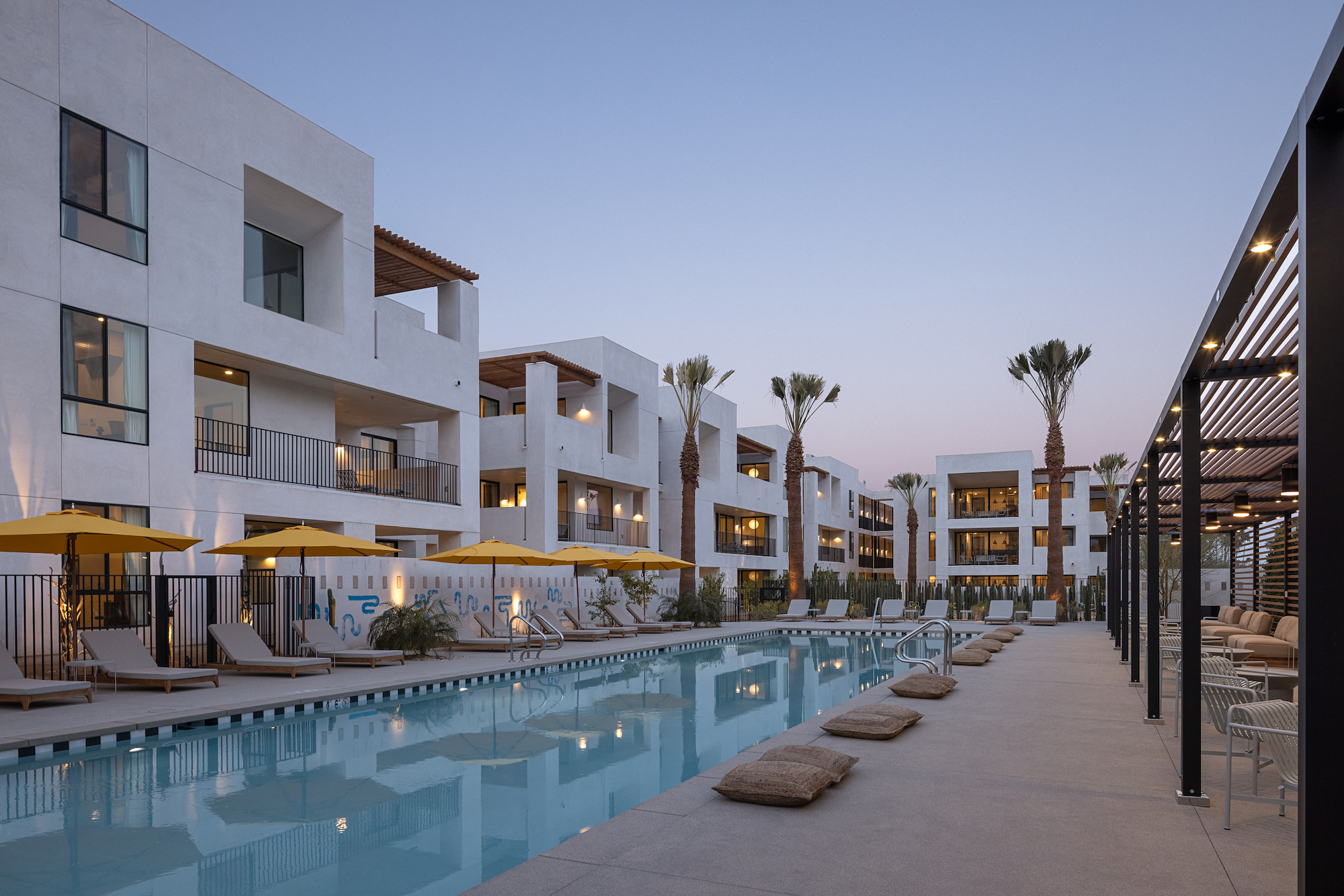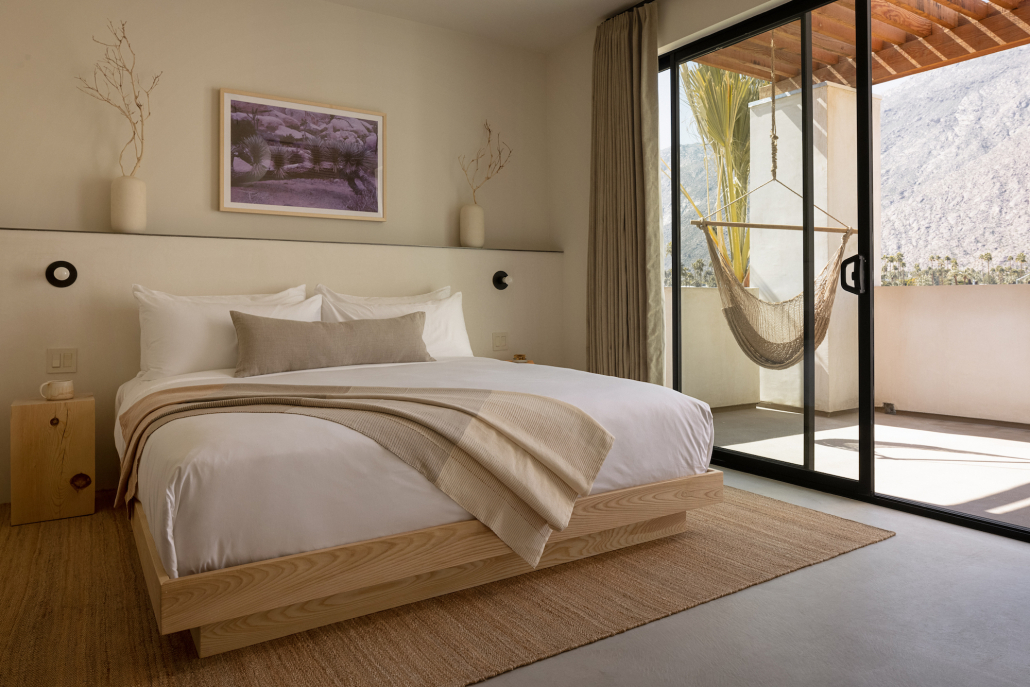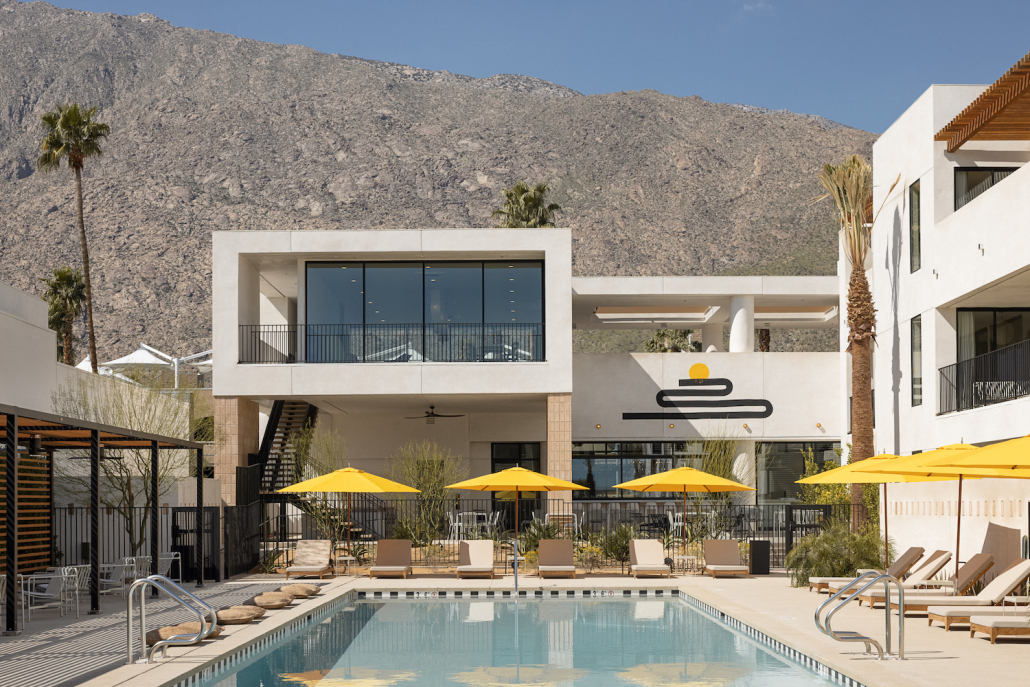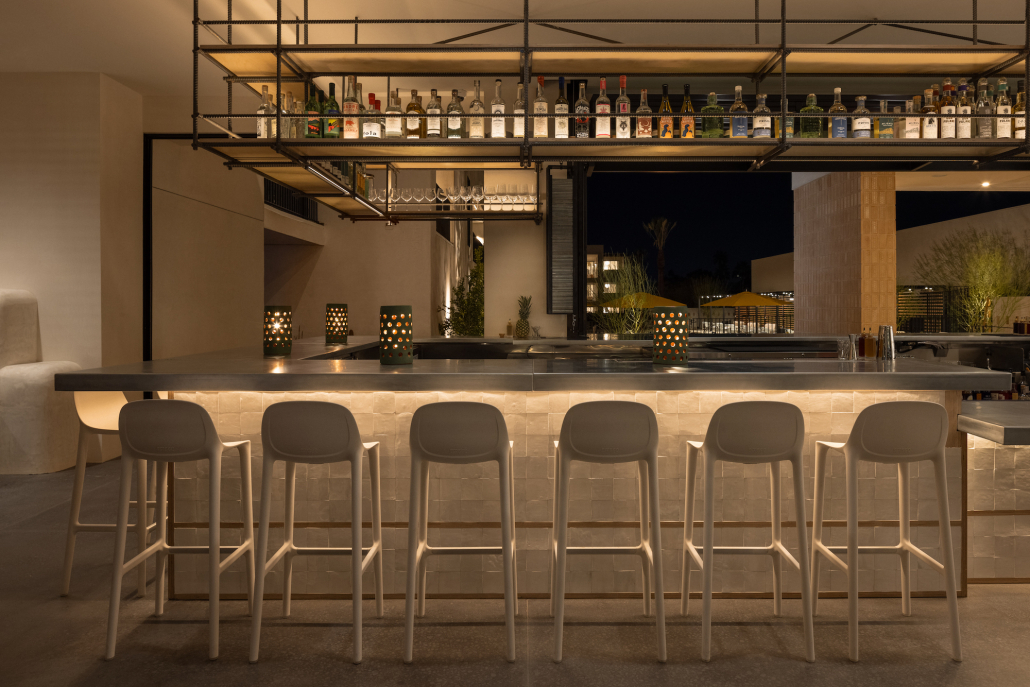“I always say, shopping is cheaper than a psychiatrist.” — Tammy Faye Bakker Messner
People tend to think of Palm Springs as a place to go and relax by the pool with a cocktail, and it totally is — however, when you leave the luxury of your small boutique hotel, adventures in shopping await.
Don’t believe me? Tammy Faye Bakker Messner and her scandal-of-an-ex-husband had two homes in Palm Springs, one of them in Movie Colony. According to the Los Angeles Times, she was well known for her frequent shopping sprees in the posh clothing and jewelry stores of Palm Springs. That was back in the mid- to late-1980s. Imagine how much it’s grown since then? (You don’t have to — I’m going to tell you!)
These days we have the very visible The Block, an amalgamation of high-end stores from Tahquitz to Museum Way (here’s a great little map of the area). If you’re looking for a distinctive gift to make friends and family feel special, you need to shop outside of the big box. So, let’s venture across the street from the commerciality of the big brands and take a leisurely doggie paddle toward the treasure trove of unique boutiques teeming with the panache of our friendly shop owners who will add an extra dash of holiday cheer to your day.
They are always available to help you find that perfect gift, or that perfect outfit that puts a big fat smile on your face. (Browsing is perfectly fine, too.) There are a LOT of local retailers, and it’s hard to list every one, so I’ve done a bit of pre-sorting for you with a few links that can get you to the right stores for the category in which you’re looking to purchase.
Clothing and Accessories Stores
Gifts, Accessories, Collectibles
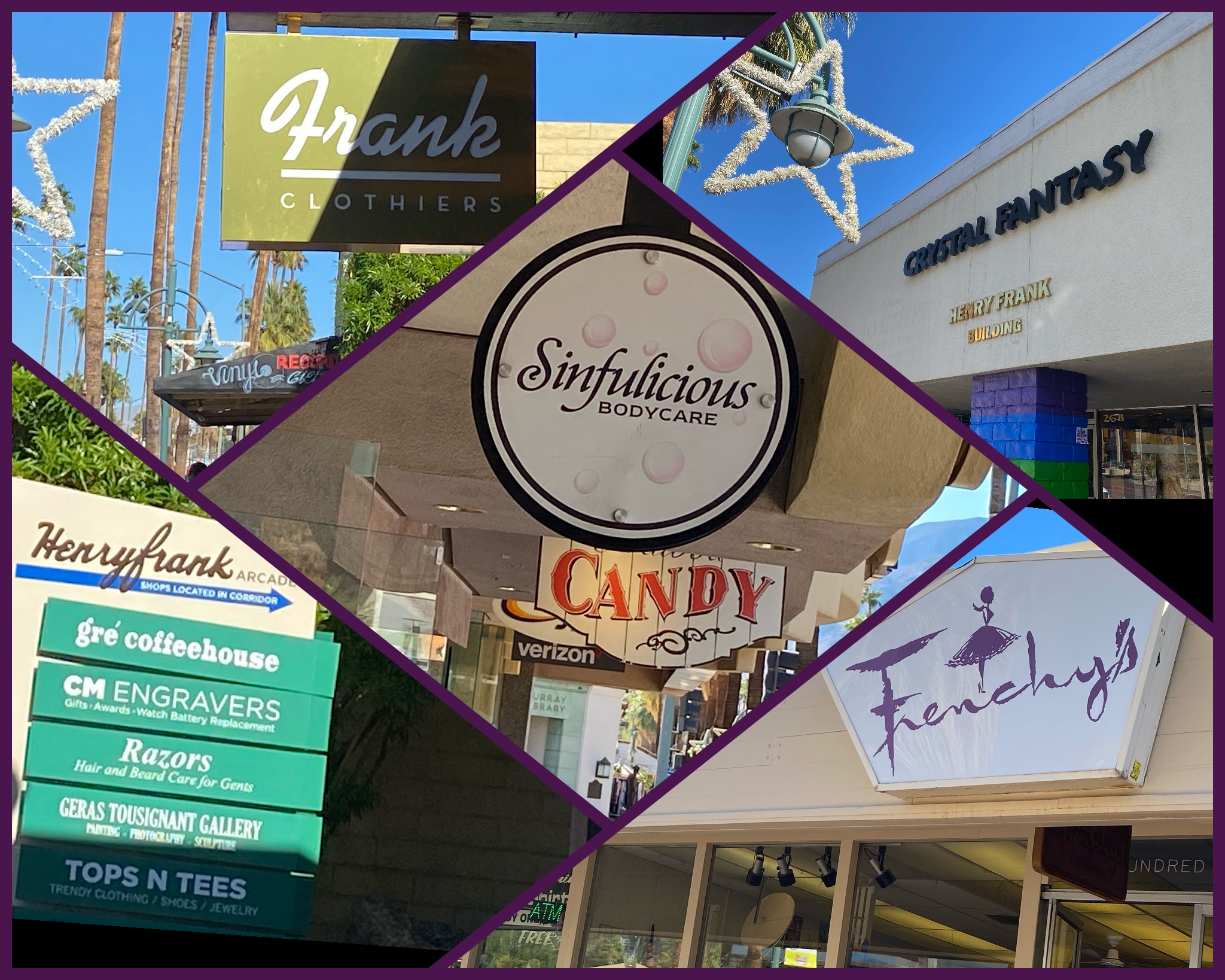
Collage by Kay Kudukis
If you’re into finding shops on your own, the best tip I can offer is to make sure you duck down into the side streets and a few little alleyways that have their own enclave, like the shops around the corner from men’s store Frank Clothier and celebrity favorite Crystal Fantasy.
We also have a toffee shop, Brandini’s, near the historic Plaza Theater. They have a terrific story and out-of-this-world toffee creations. Absolutely worth the calories.
Along the way are coffeehouses galore, and delightful lunch spots where you can meet or regroup with friends, or if you’re a lone wolf, relax in a sunny spot and plan the rest of your shopping spree.
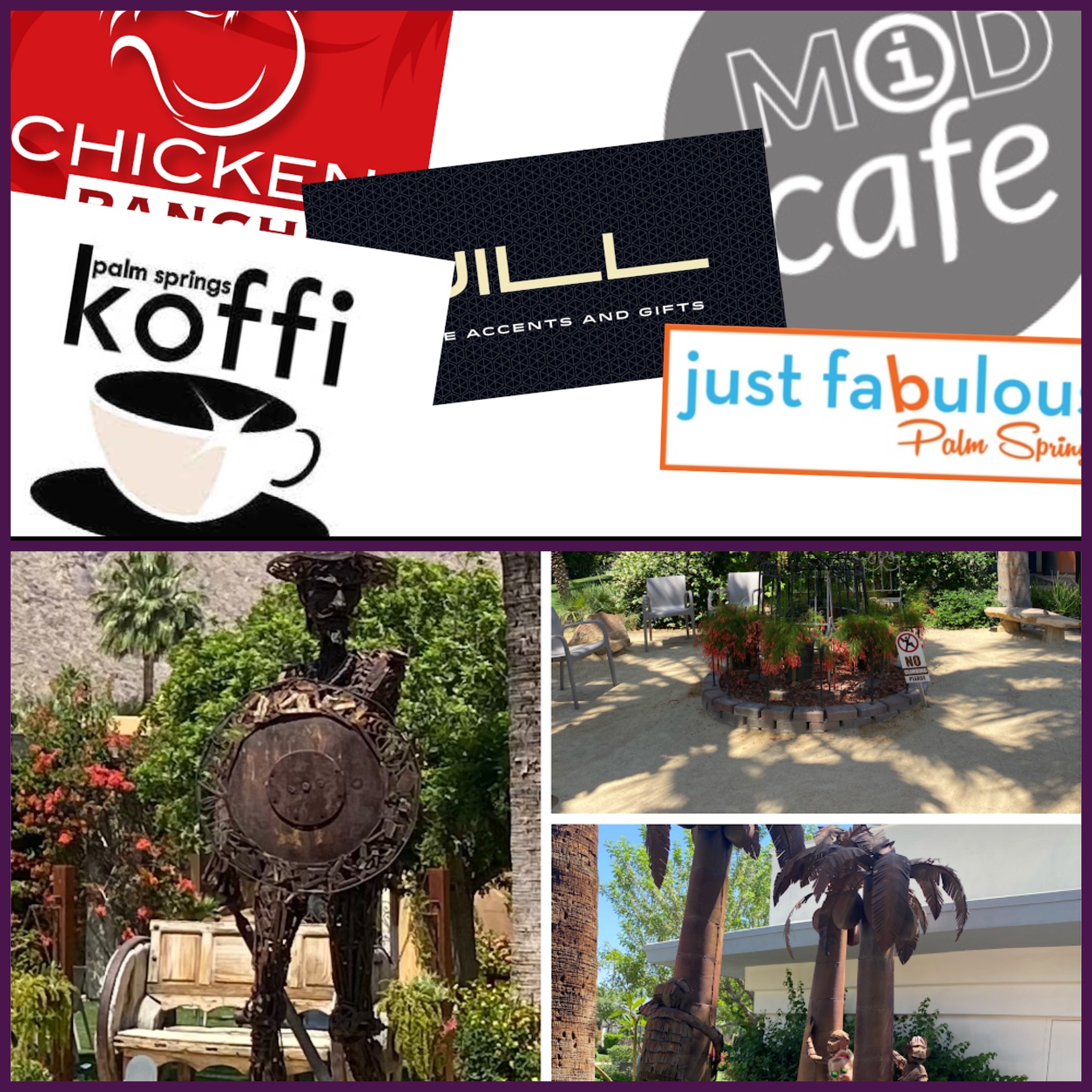
Collage by Kay Kudukis
There’s also the Corridor, just north of Alejo on Palm Canyon Drive. It’s a great place to grab a coffee or a bite to eat, enjoy the artwork, then do a little side shopping at Jill’s and Absolutely Fabulous.
Speaking of fabulous, check out the uptown Design District at Palm Canyon Galleria. It’s chock full of vintage high-end wares and home furnishings and many carry numerous mid-century and vintage items. Get a load of Bon Vivant with its vintage glass and jewelry, Froelick Gallery, and more. Inventory has included Blenko glass, vintage Tiffany jewelry, Bakelite pieces, Murano and Ikebana vases, Marbro lamps, Raymor pottery, a Bjorn Windblad porcelain bowl, and pieces by Palm Springs artists. Regular hours are Thursday through Monday.
If you’re into vintage jewelry and have a few hundred Hamiltons to spend, try Gallerie24, local designer Carlos King’s boutique (by appointment only). On Indian Canyon are a few cool spots, specifically the Mojave Trading Post, where local crafters have their own mini-shops with wondrous things. And because Palm Springs is associated with retro and vintage items, here is a nice little list of all things antique-y:
Home Furnishings and More
Antique Galleries of Palm Springs
505 Industrial Pl.
Sunny Dunes Antique Mall
507 E Sunny Dunes Rd.
Little Shop of Treasures
616 E Sunny Dunes Rd.
Aida’s Antiques
401 Industrial Pl. S
Victoria’s Attic Antique Mall
798 N Palm Canyon Dr.
a La MOD INC
886 N Palm Canyon Dr.
Porter & Plunk
3500 E Tachevah Dr. Ste. H
Vintage Clothing
Iconic Atomic
1103 N Palm Canyon Dr.
Mitchells Palm Springs
106 S Indian Canyon Dr.
The Frippery
664 N Palm Canyon Dr.
Vintage PS Gal
798 N. Palm Canyon Dr. #VPSG
That’s it for me this year. Hope to see you at one of our cool resorts or walking down our festive streets — I’ll be the one in the mask. Cheers to 2022!

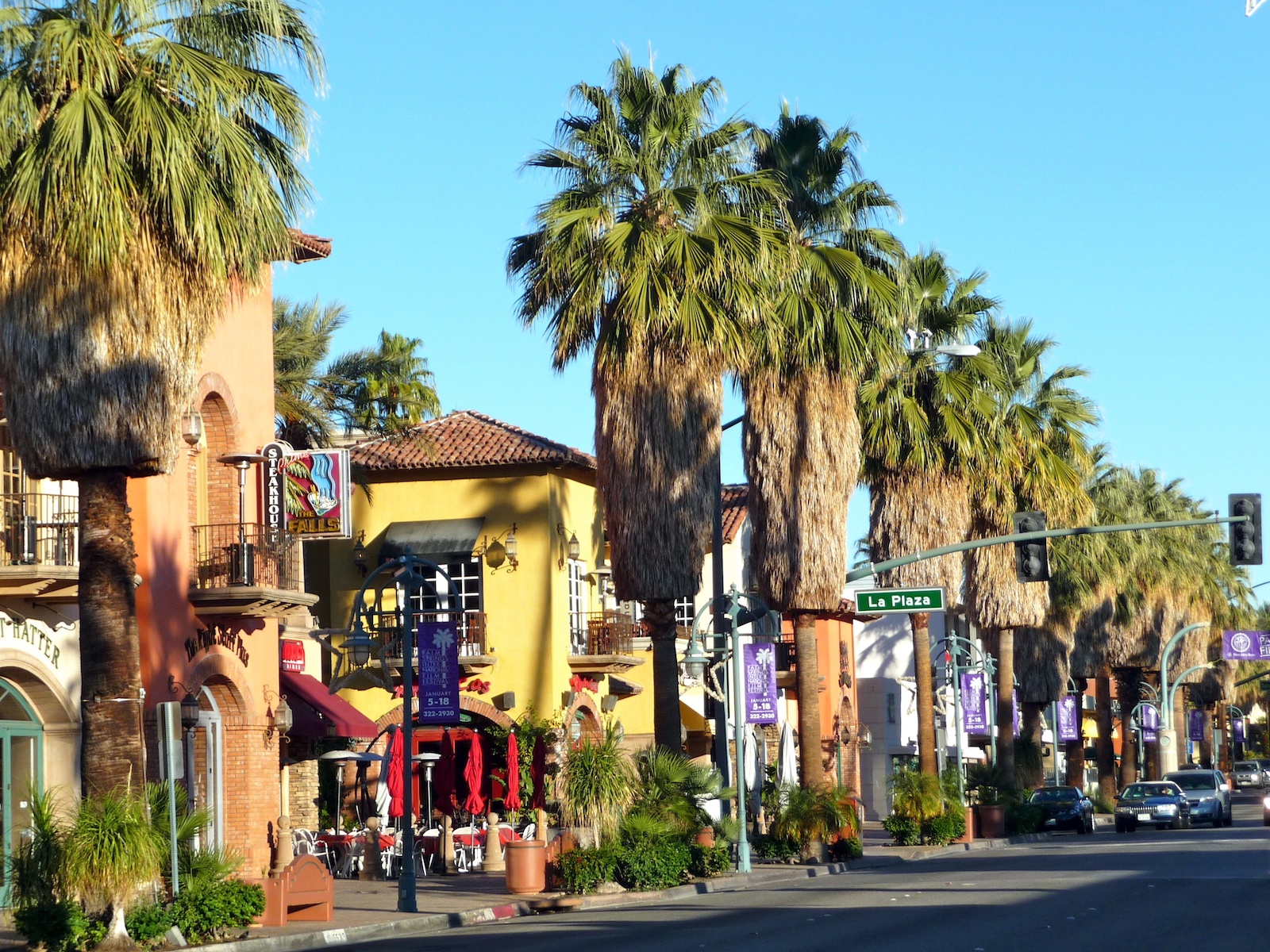
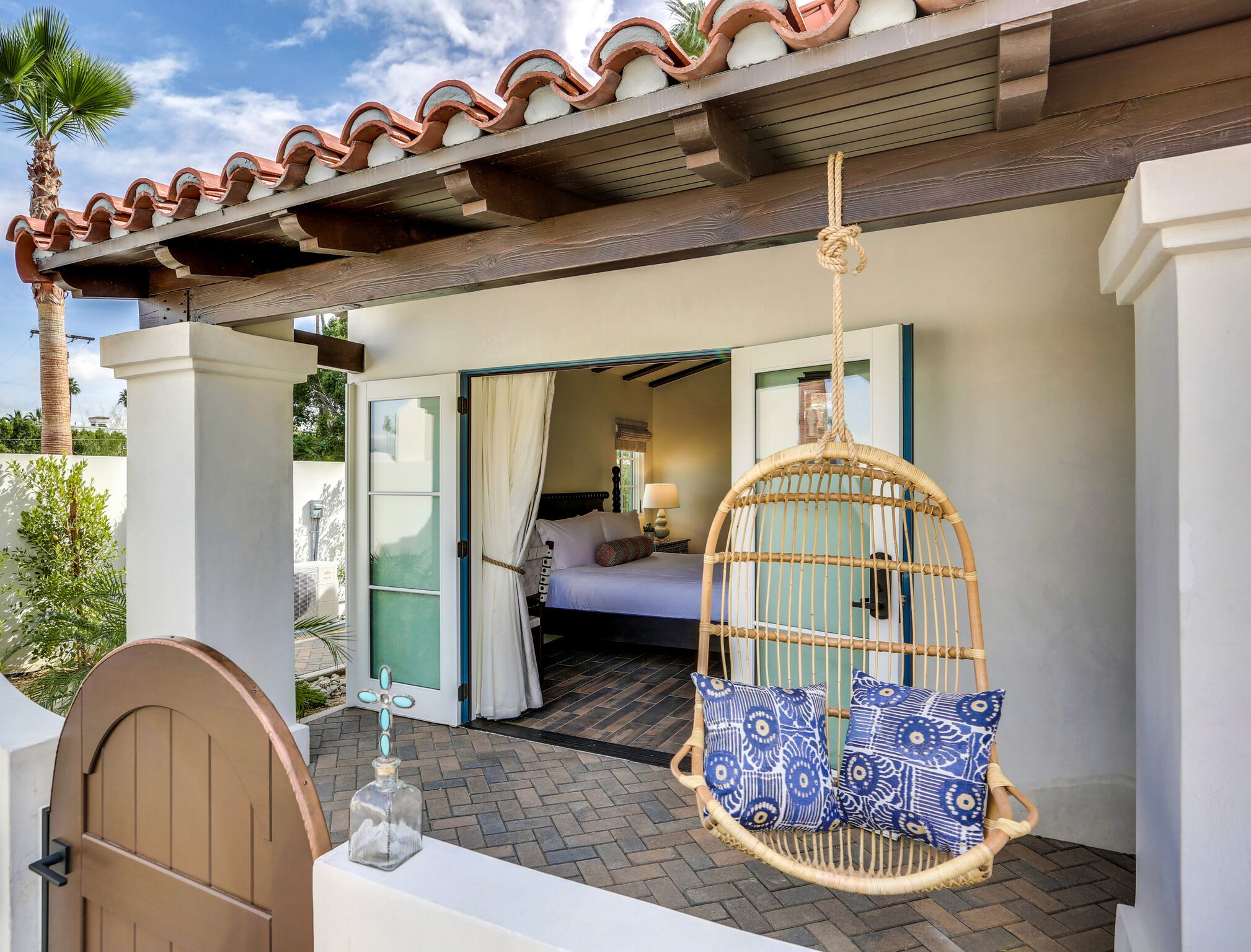
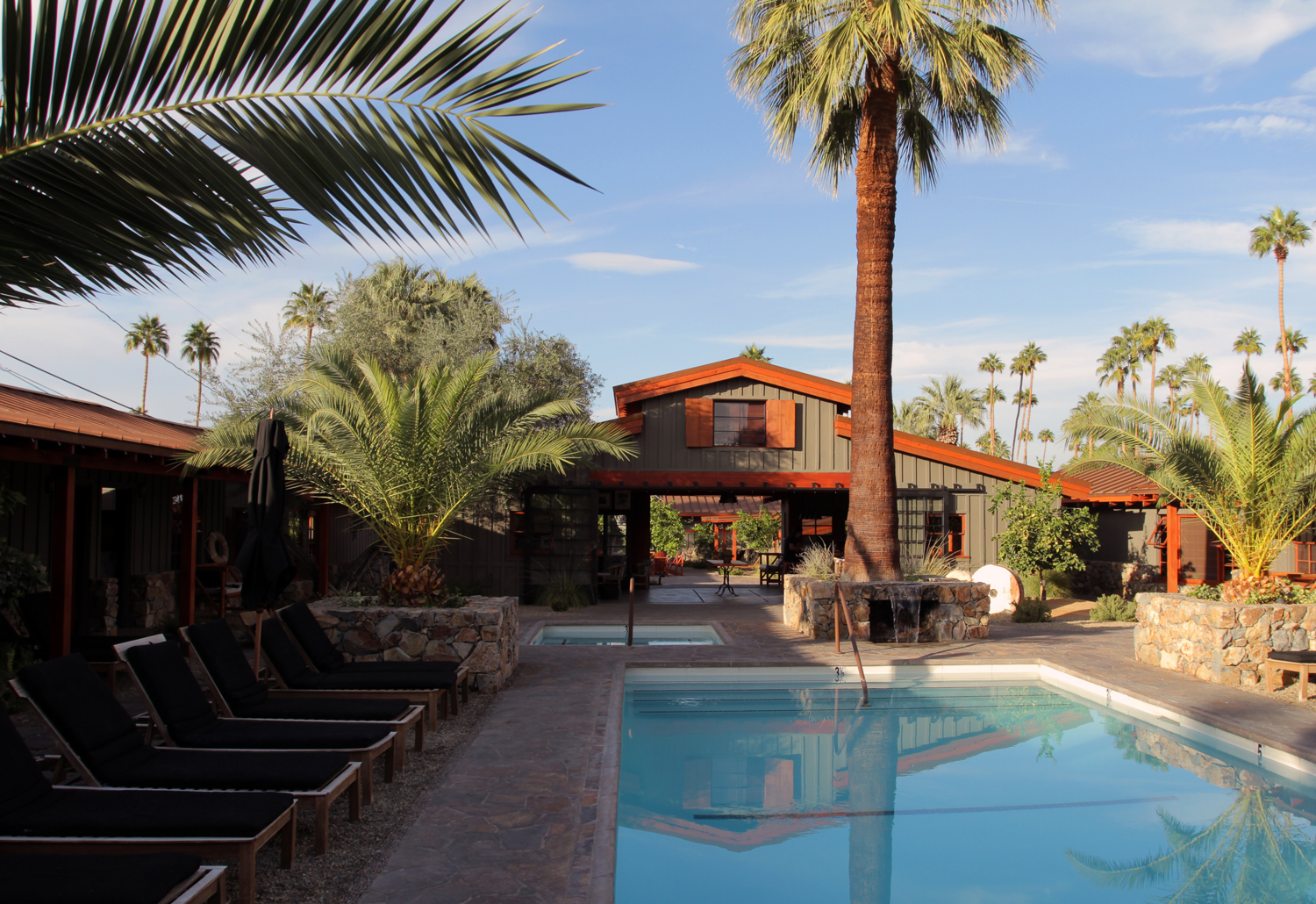
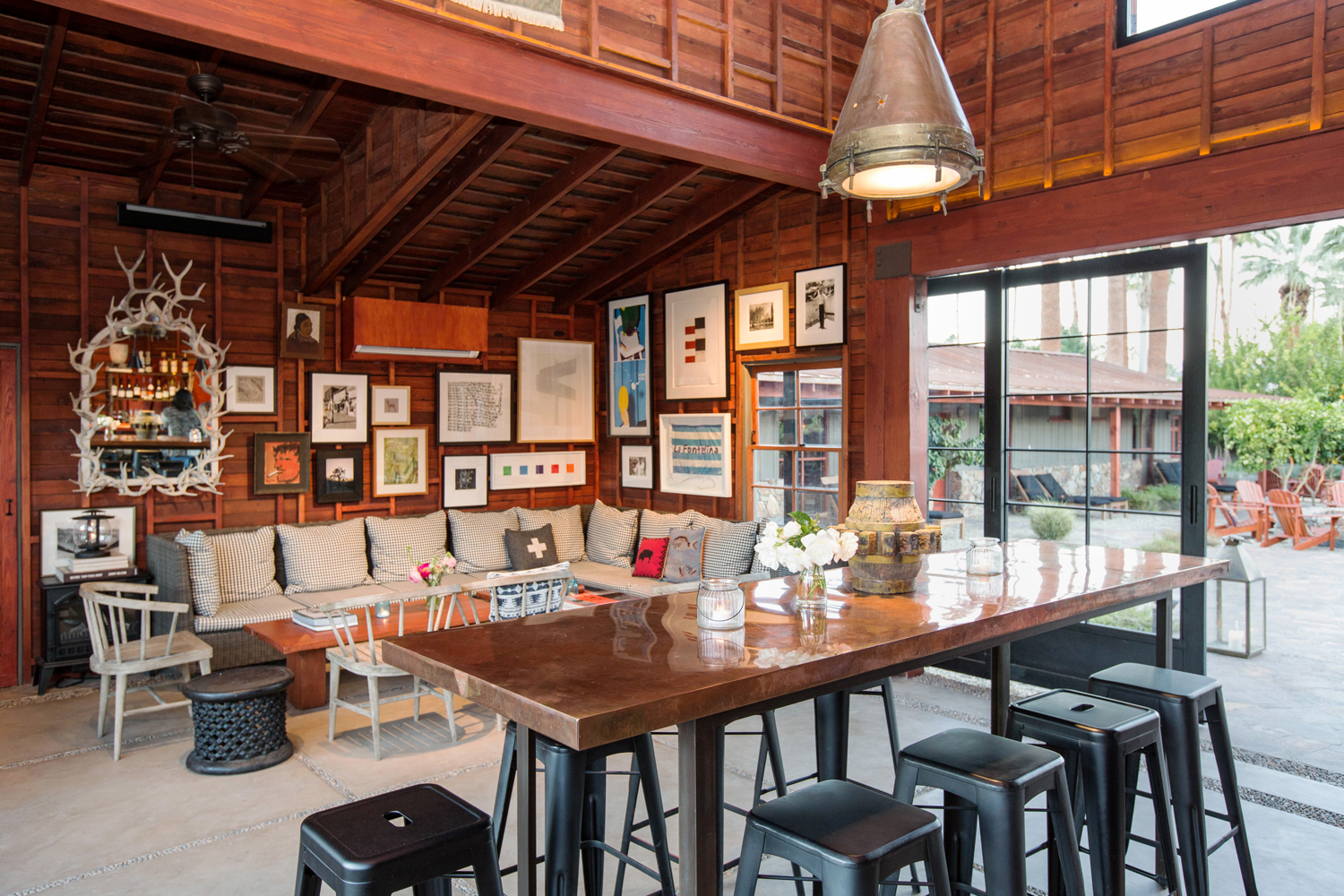
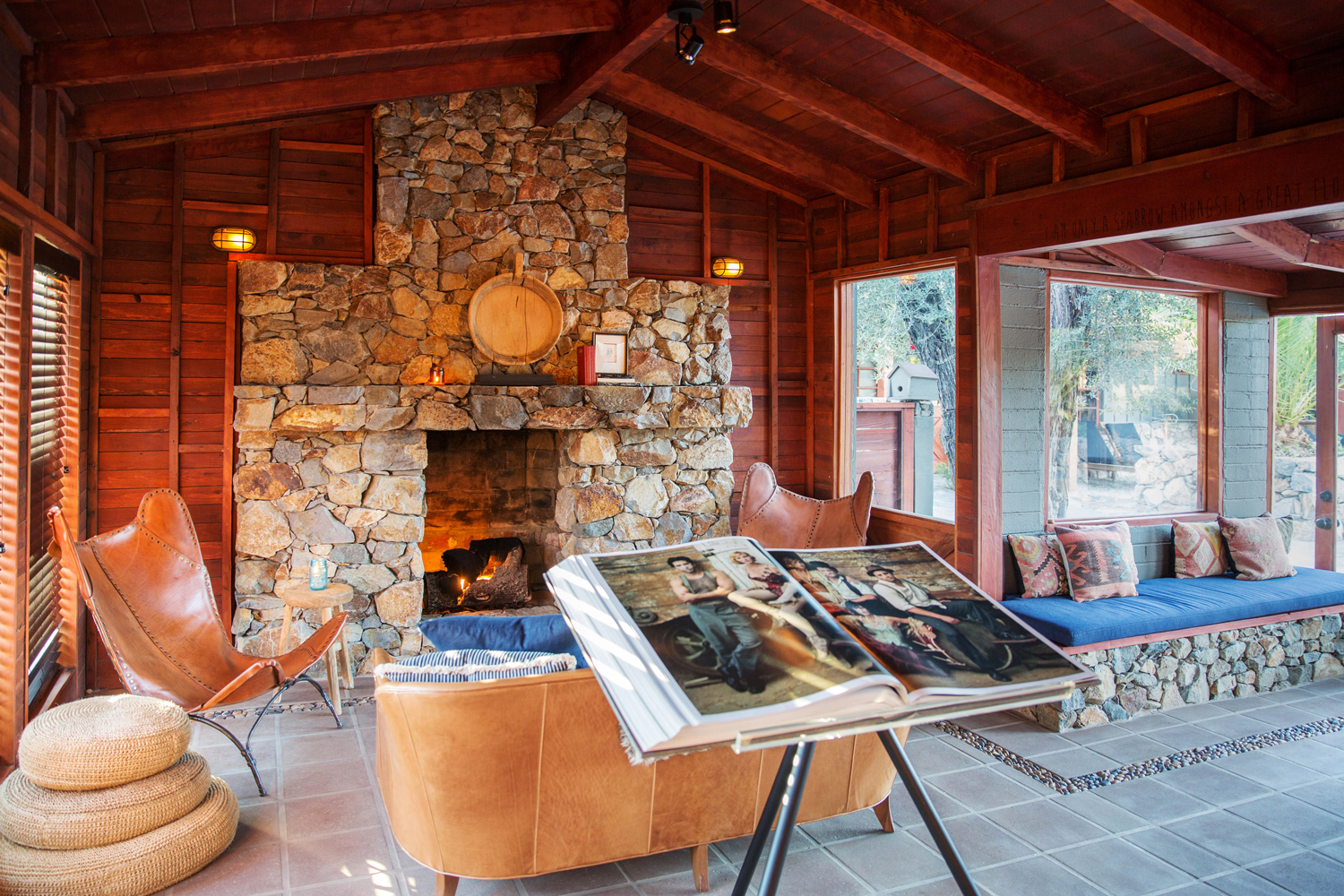

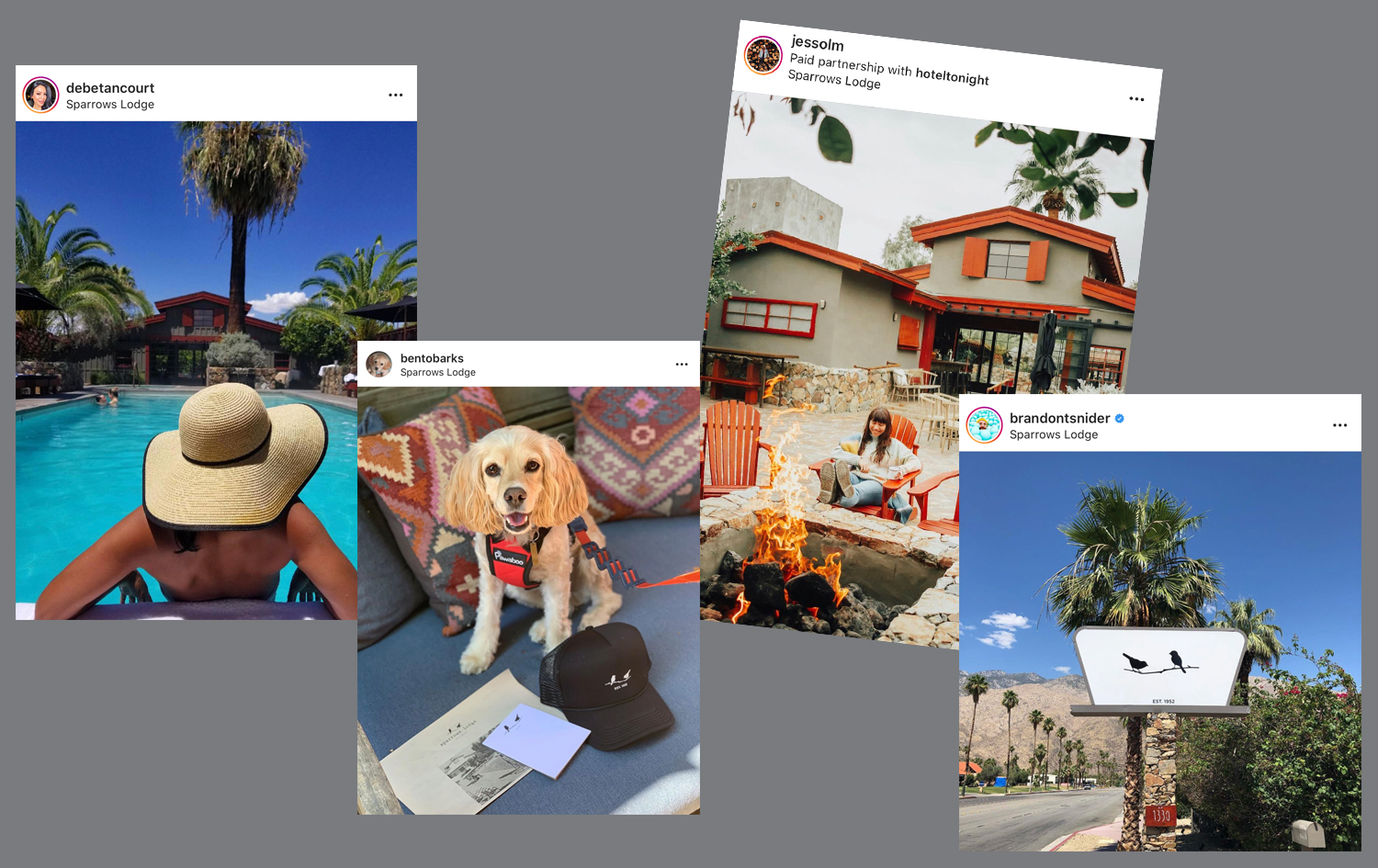
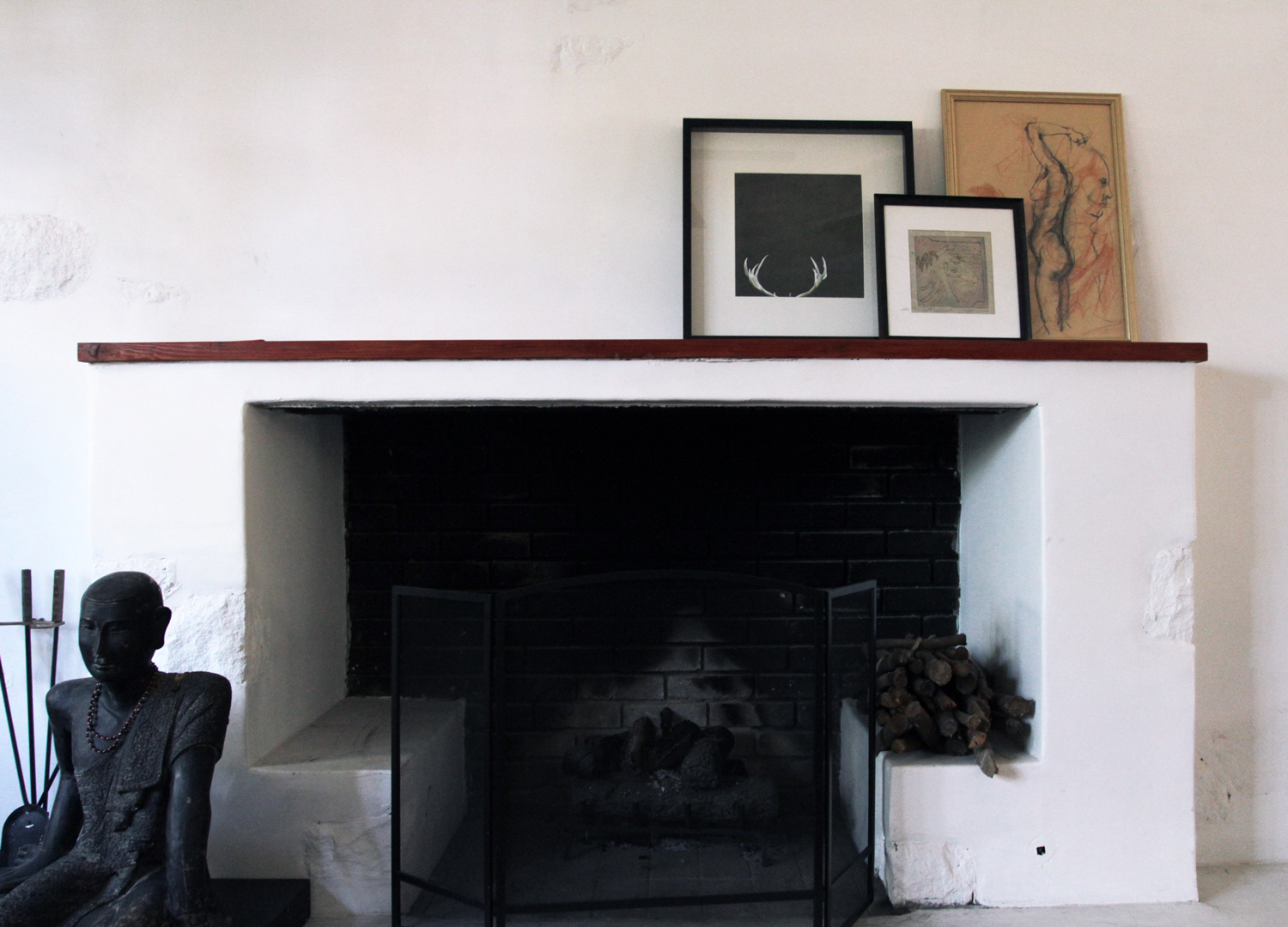
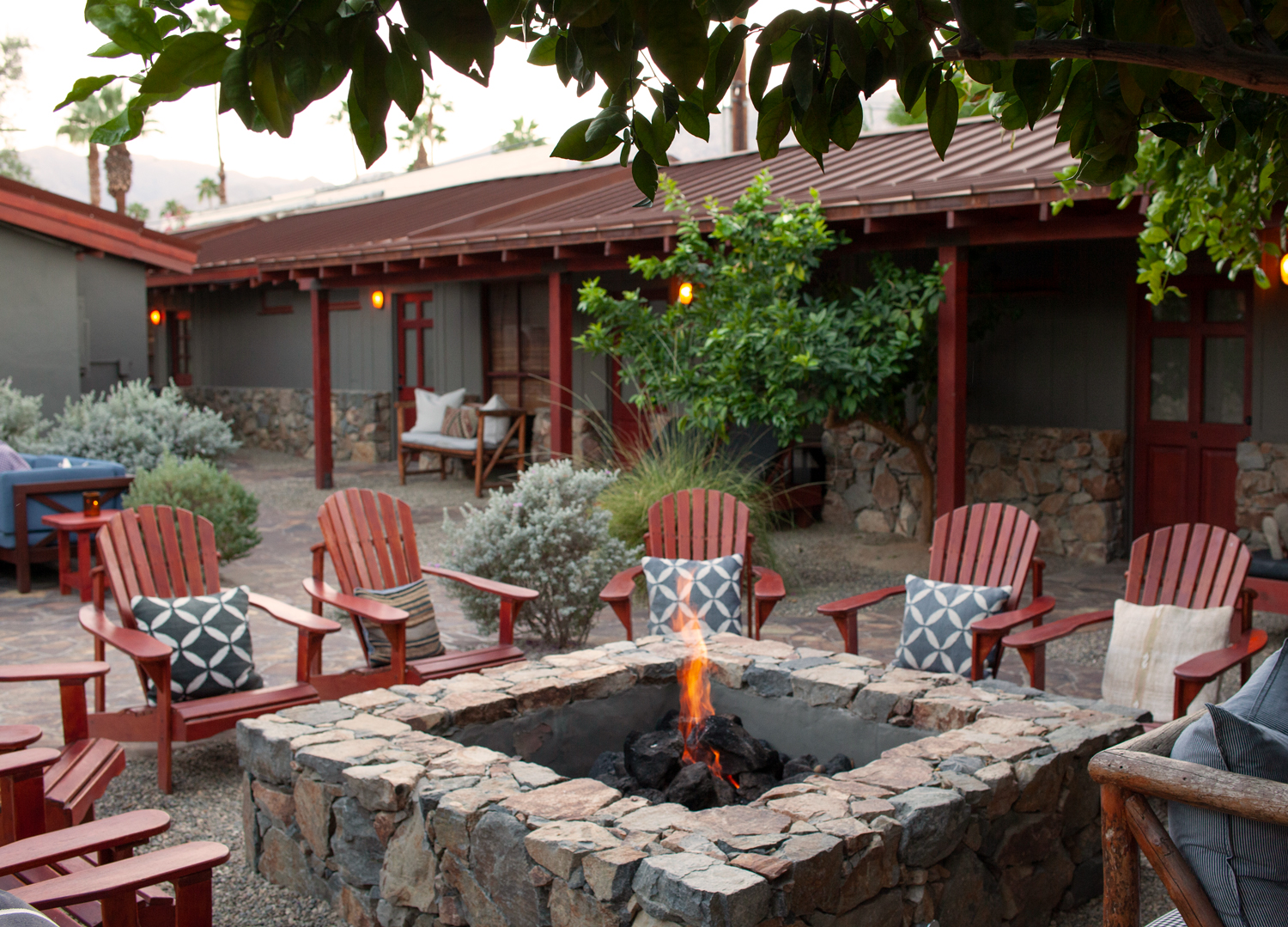
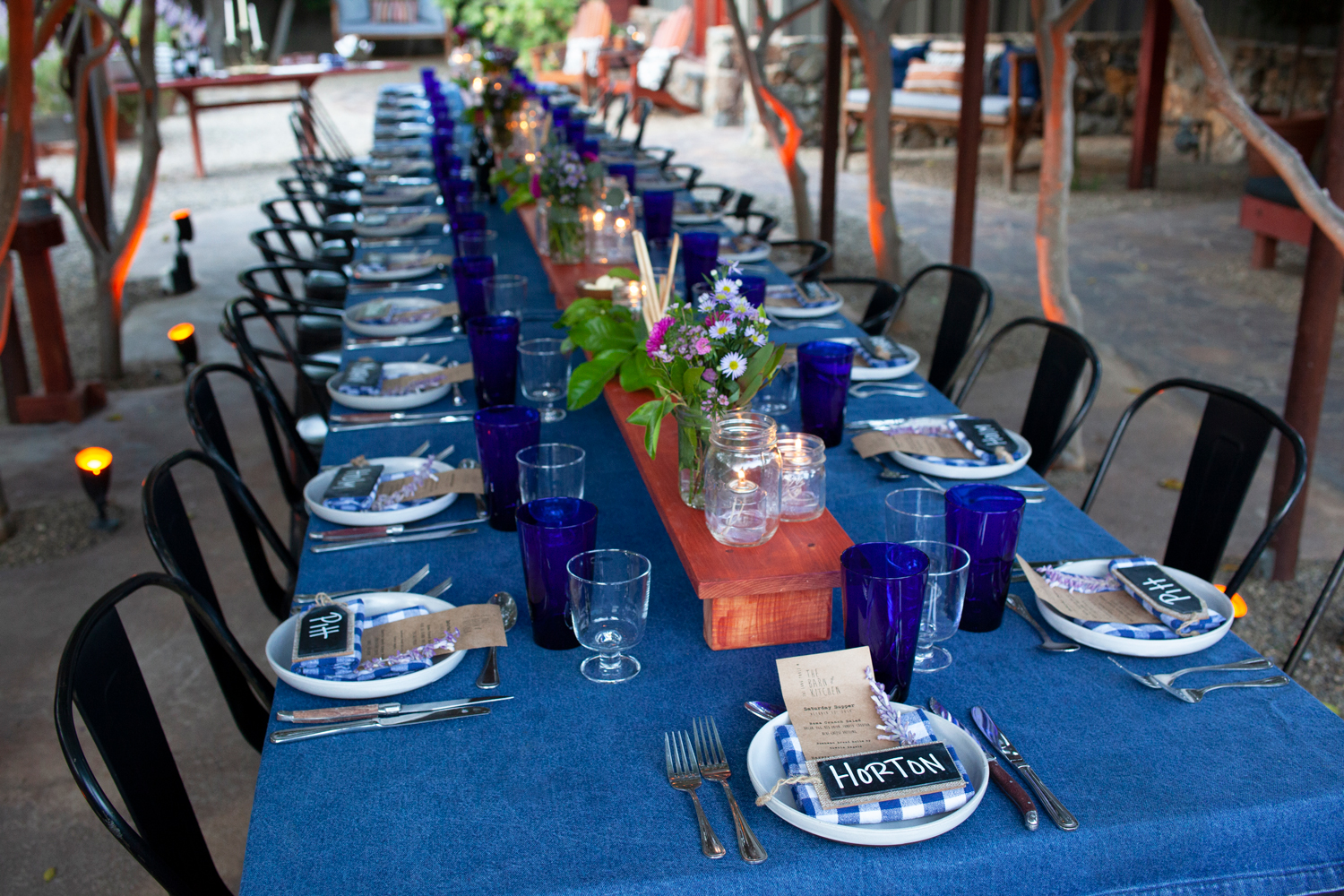
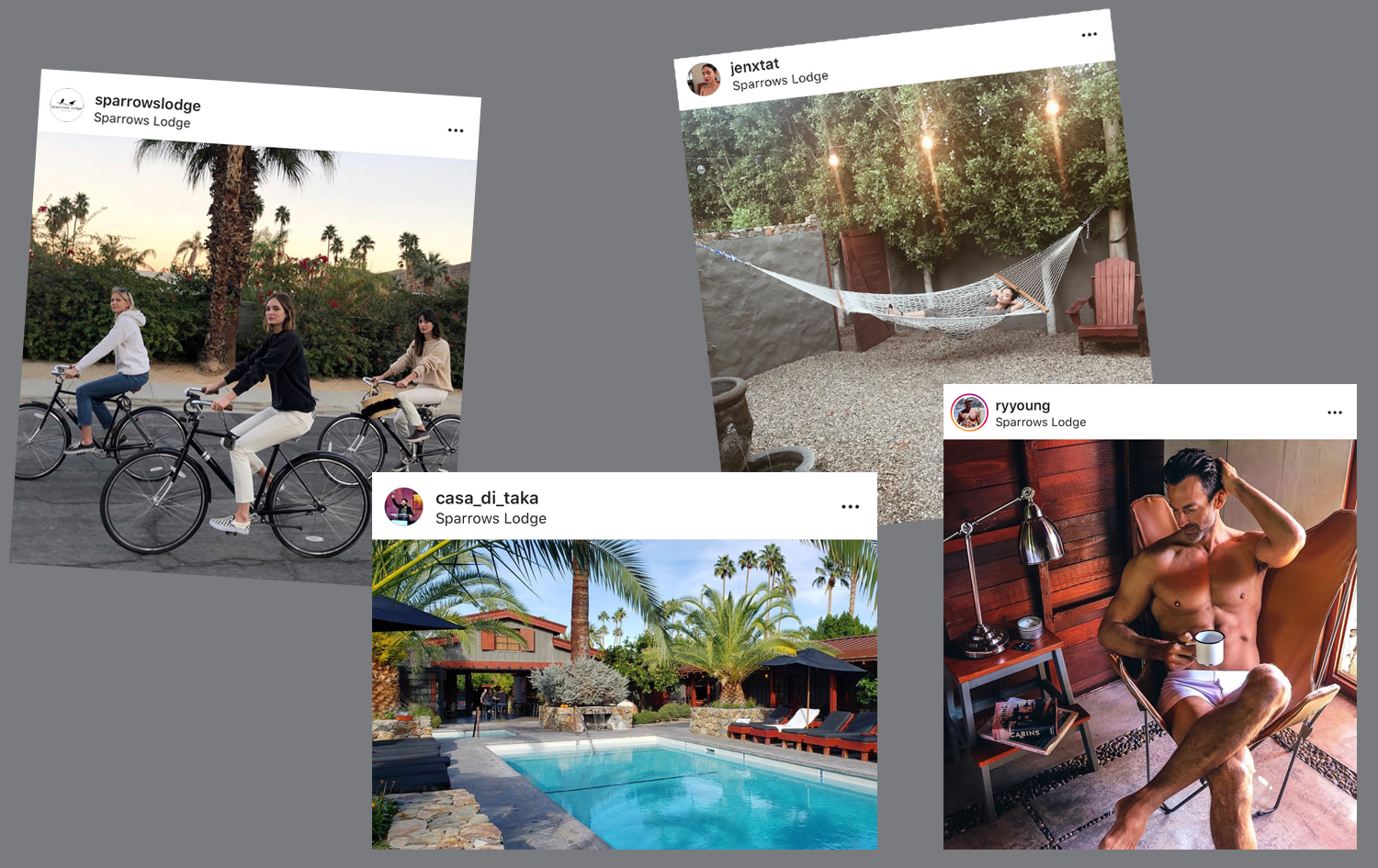
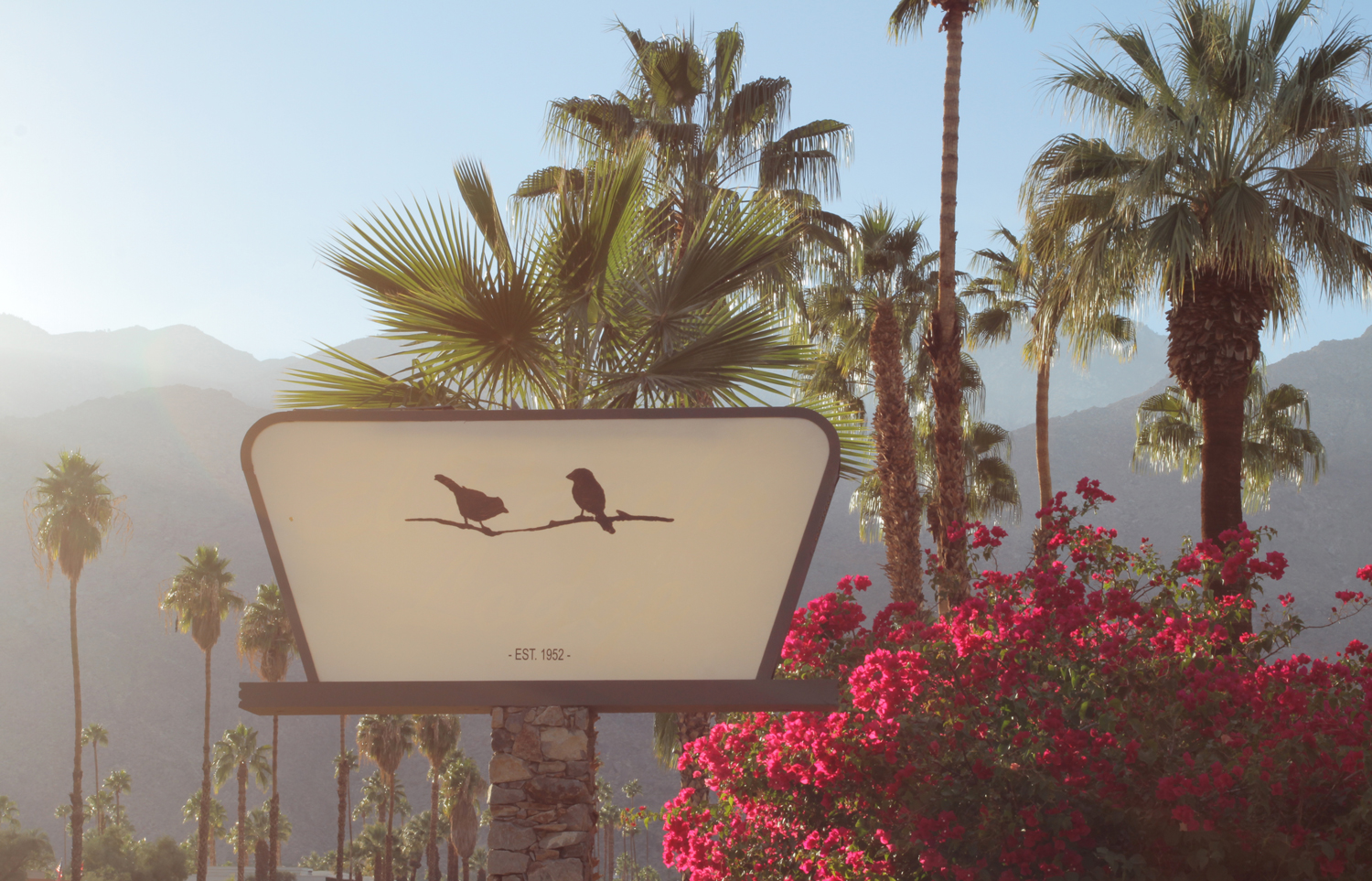
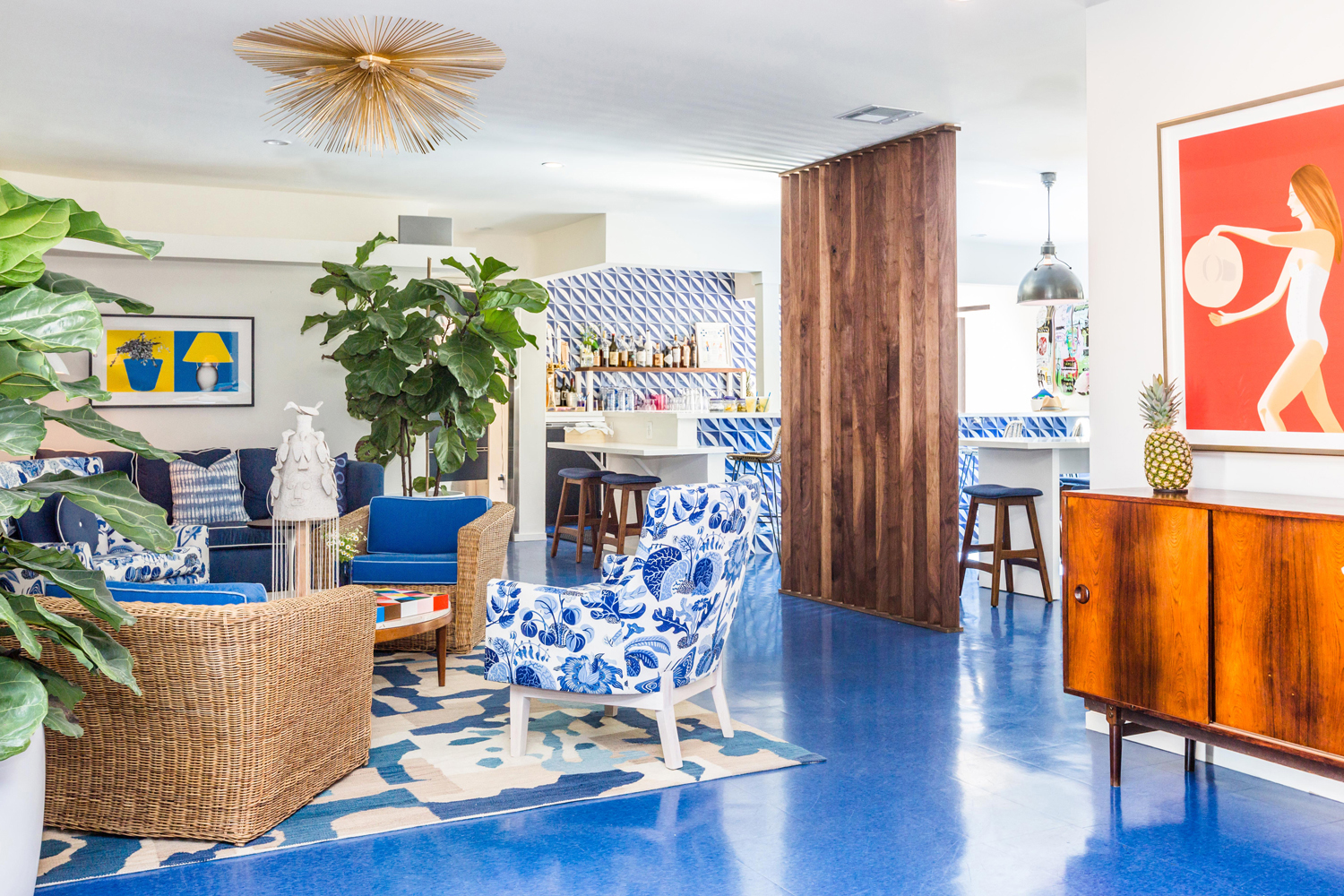
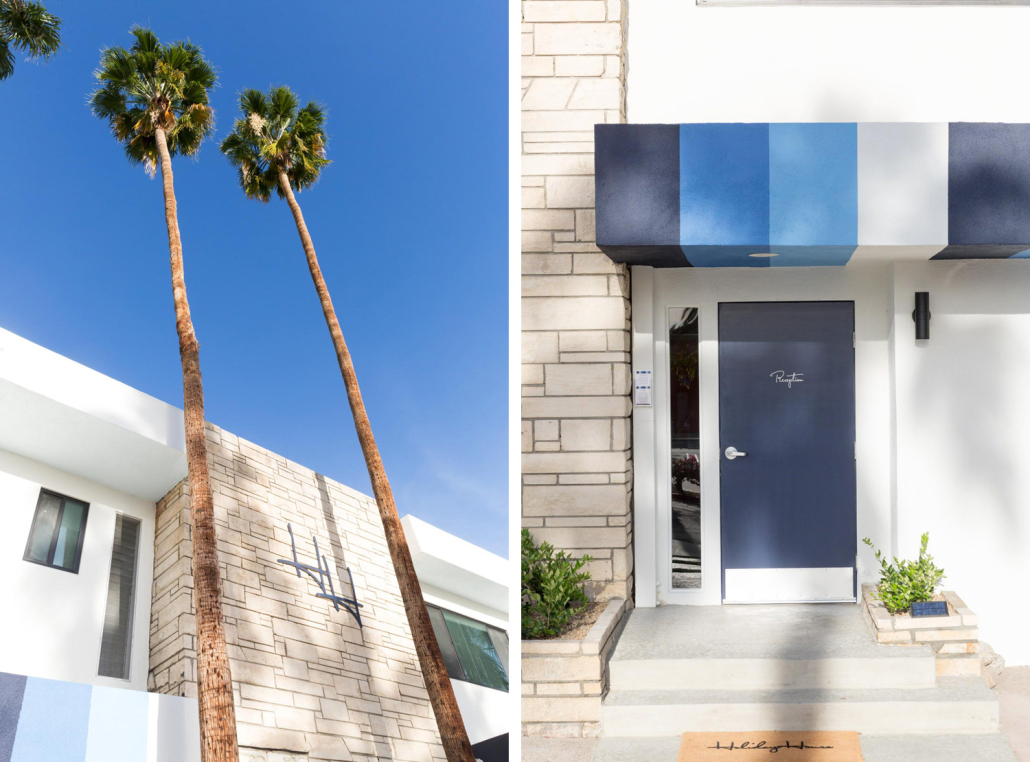
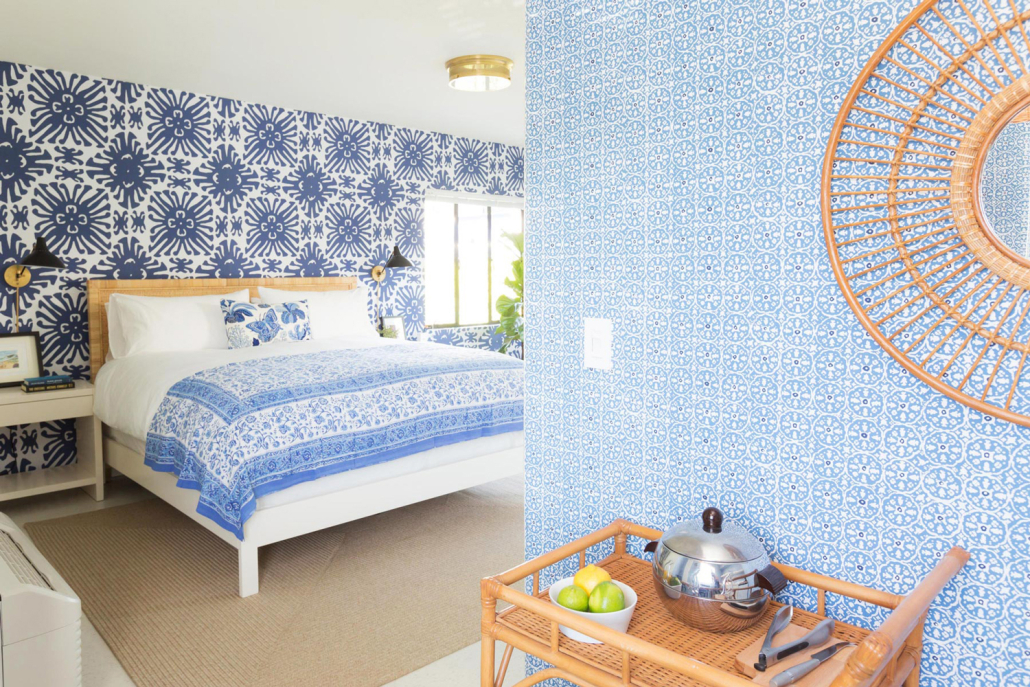

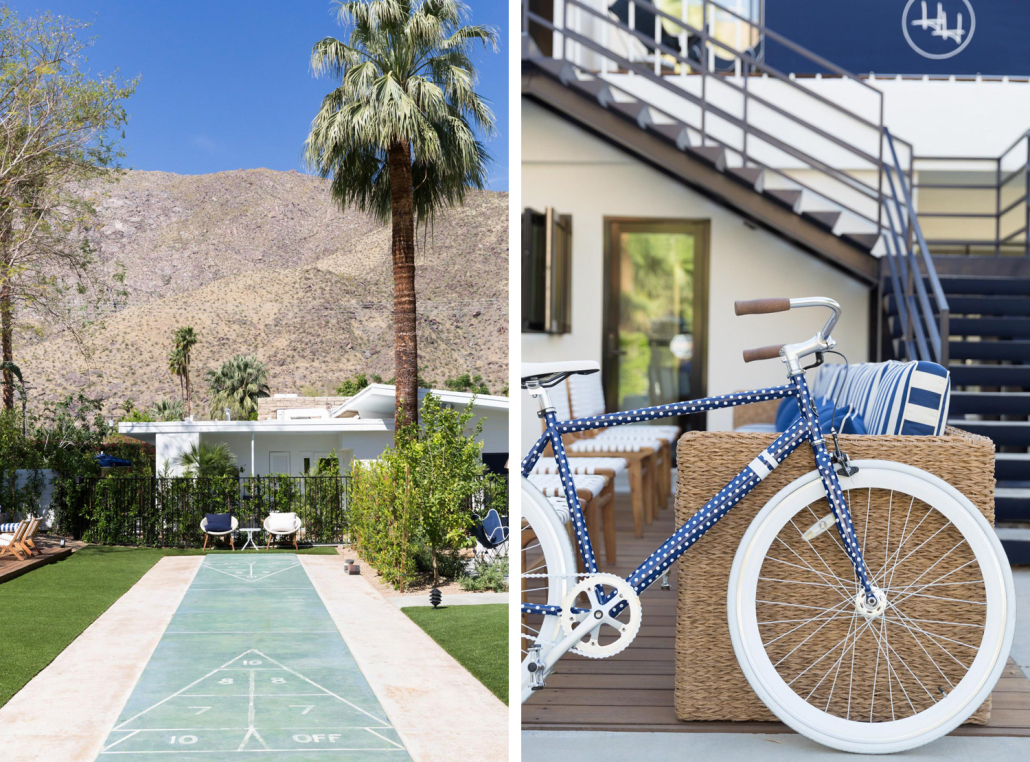
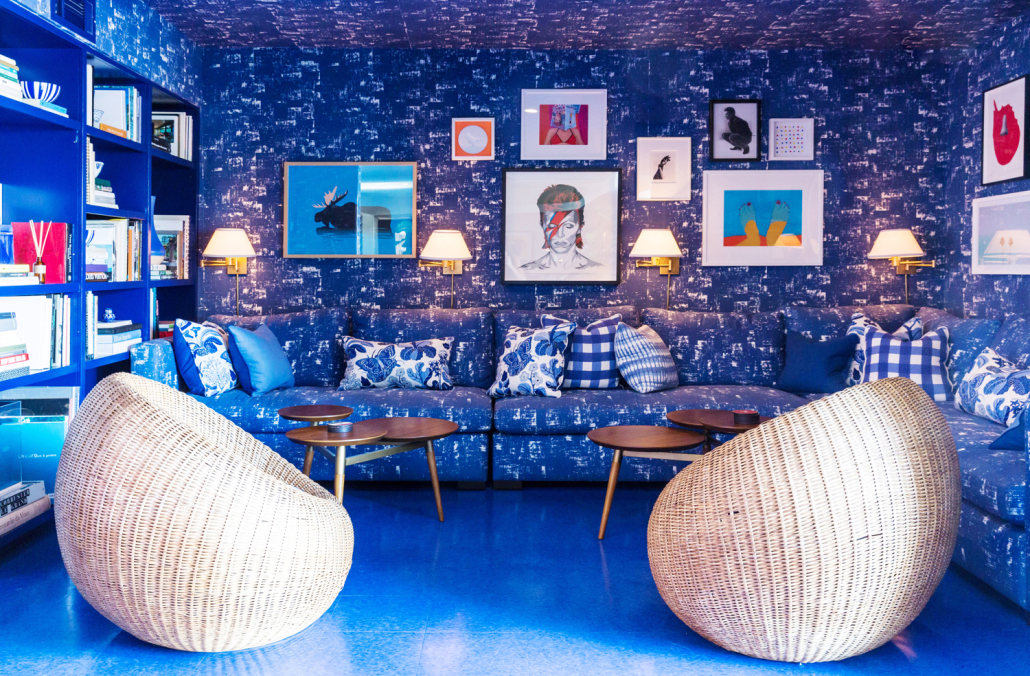


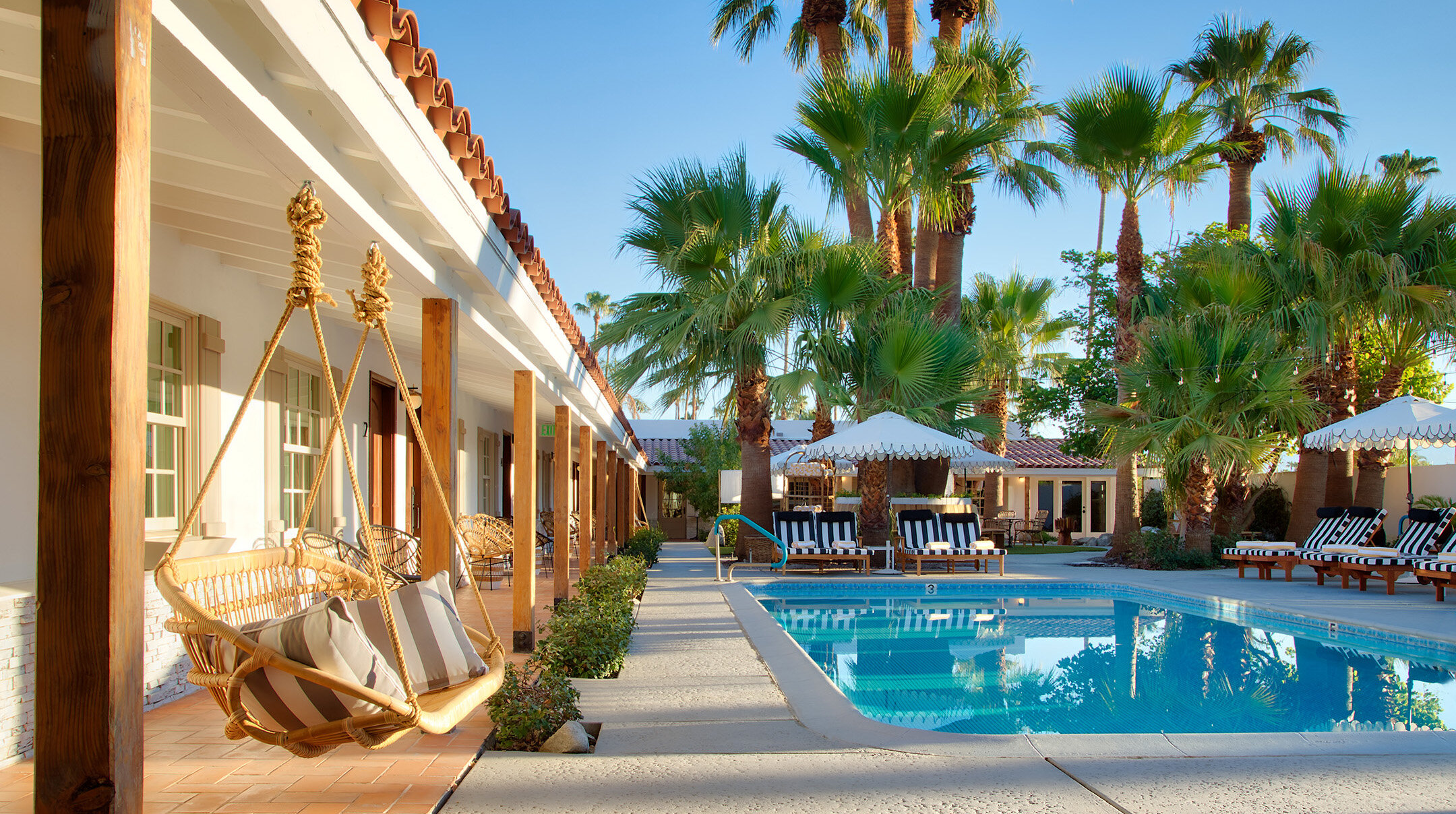
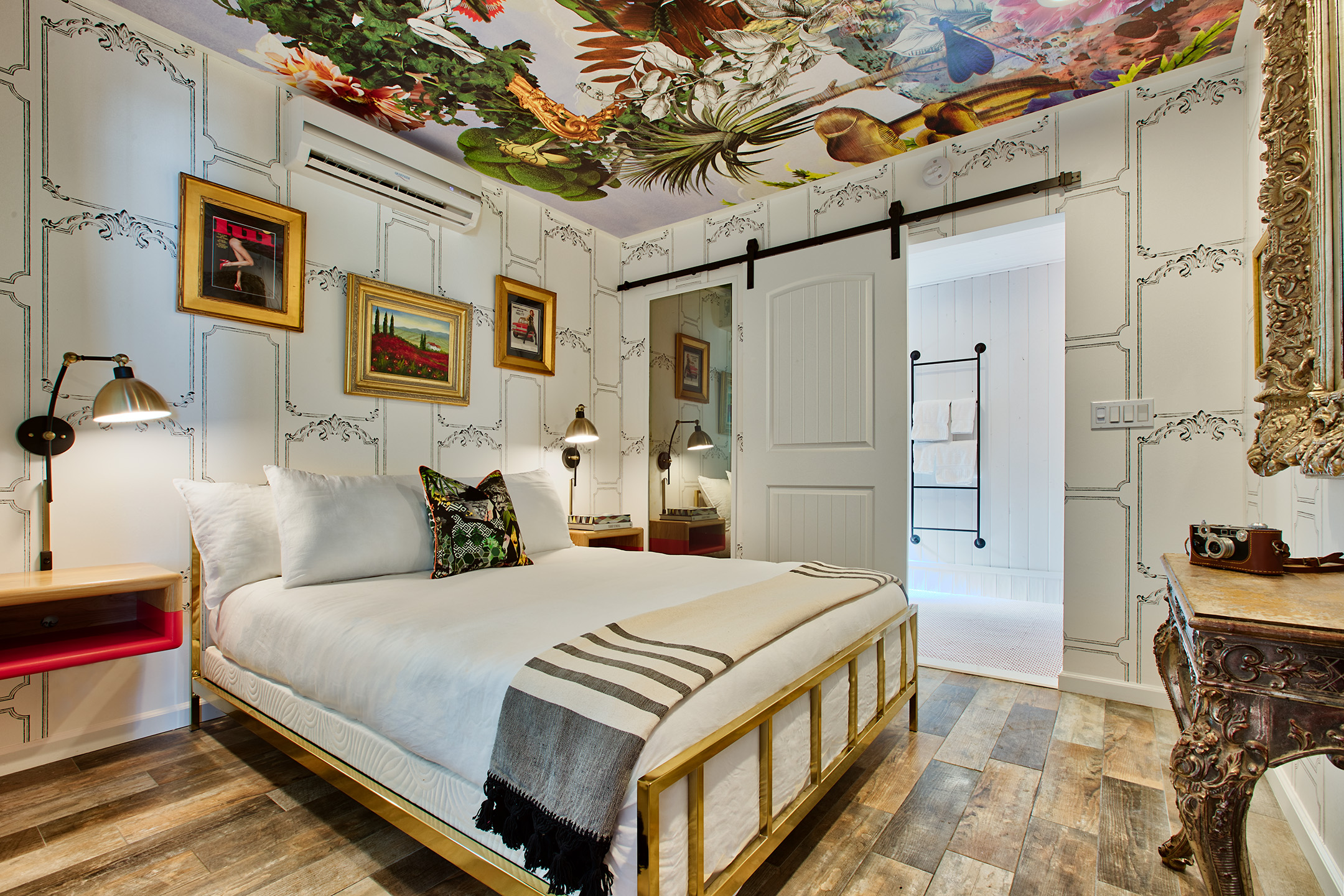

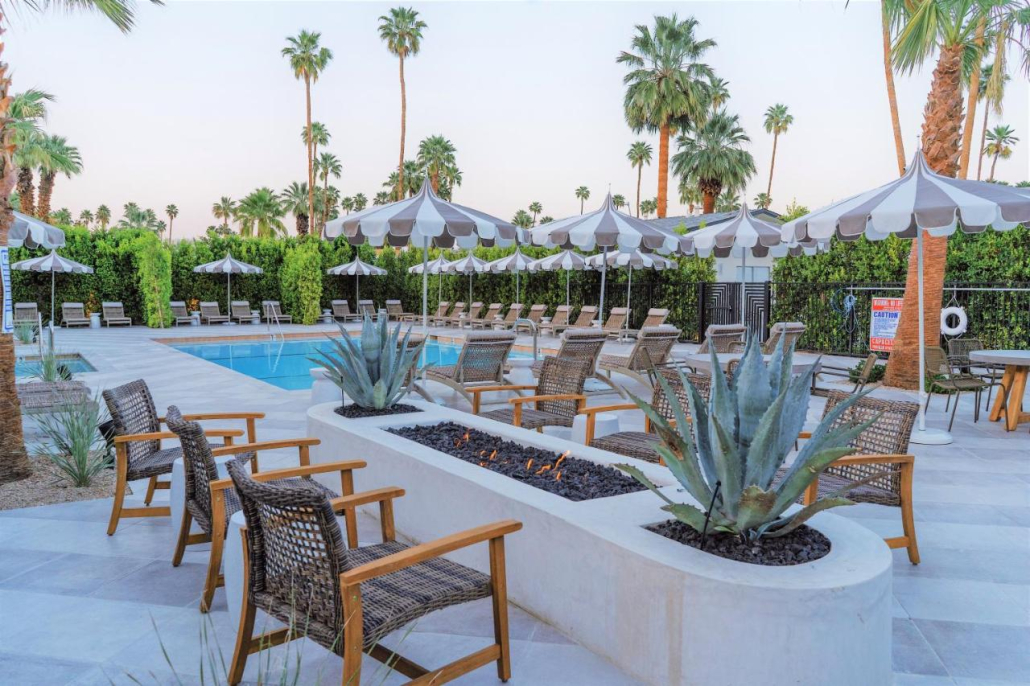

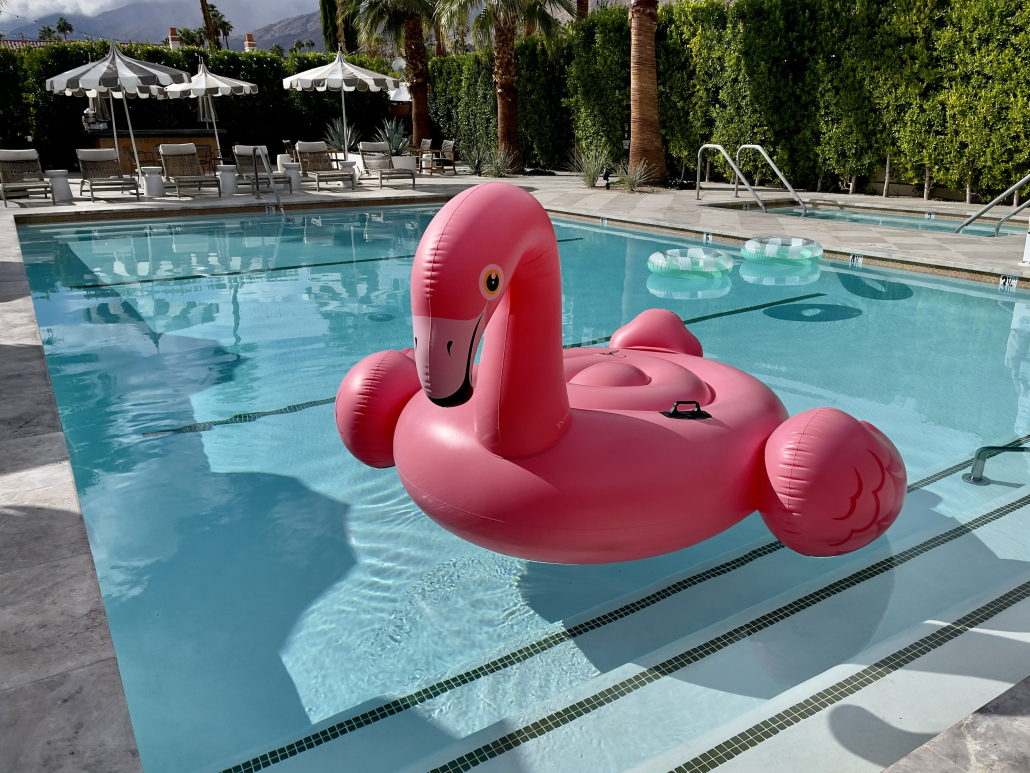
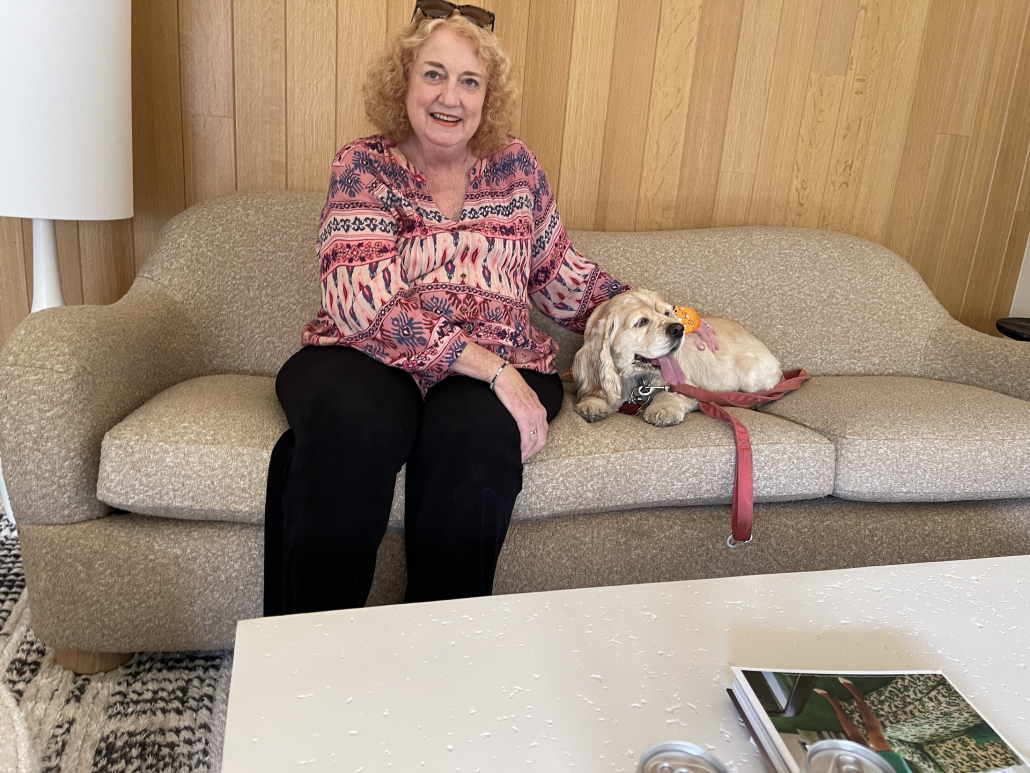
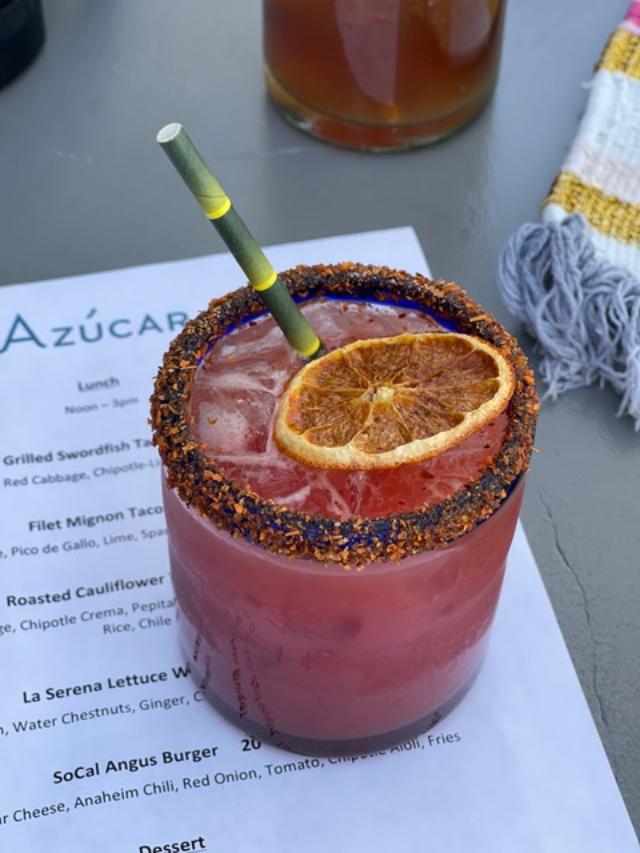
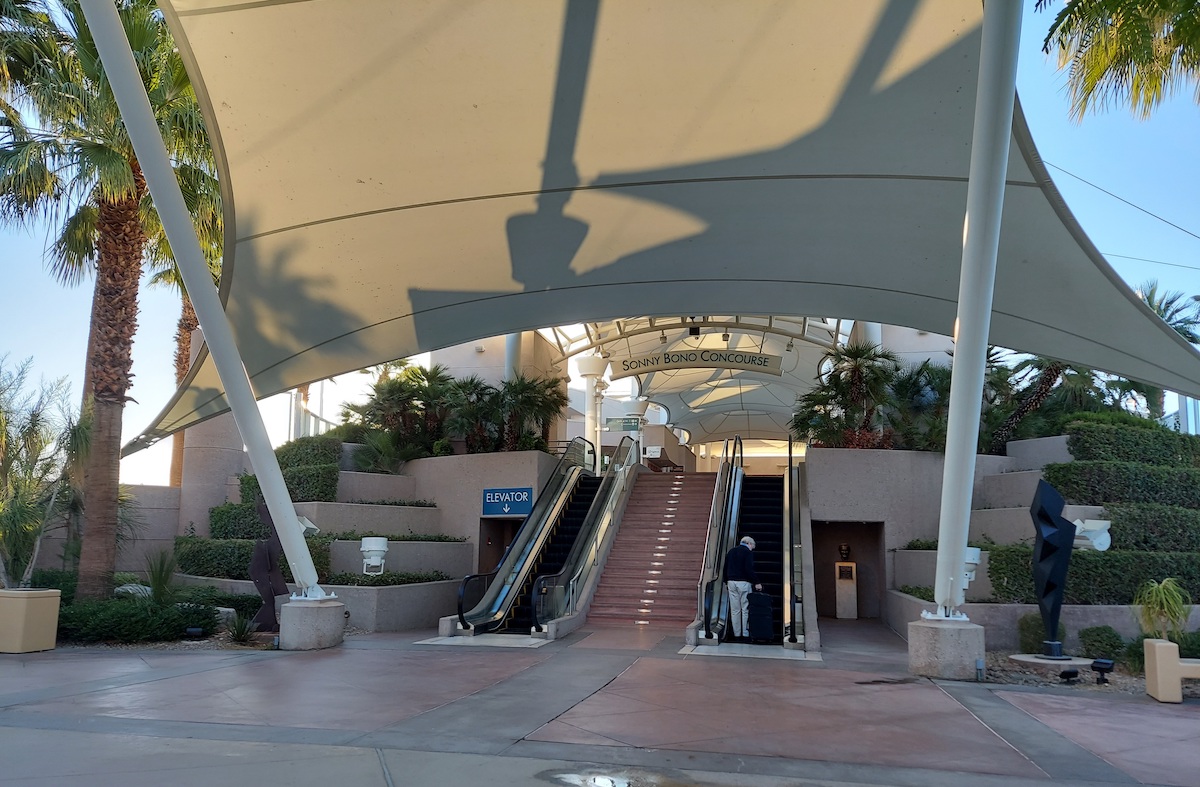
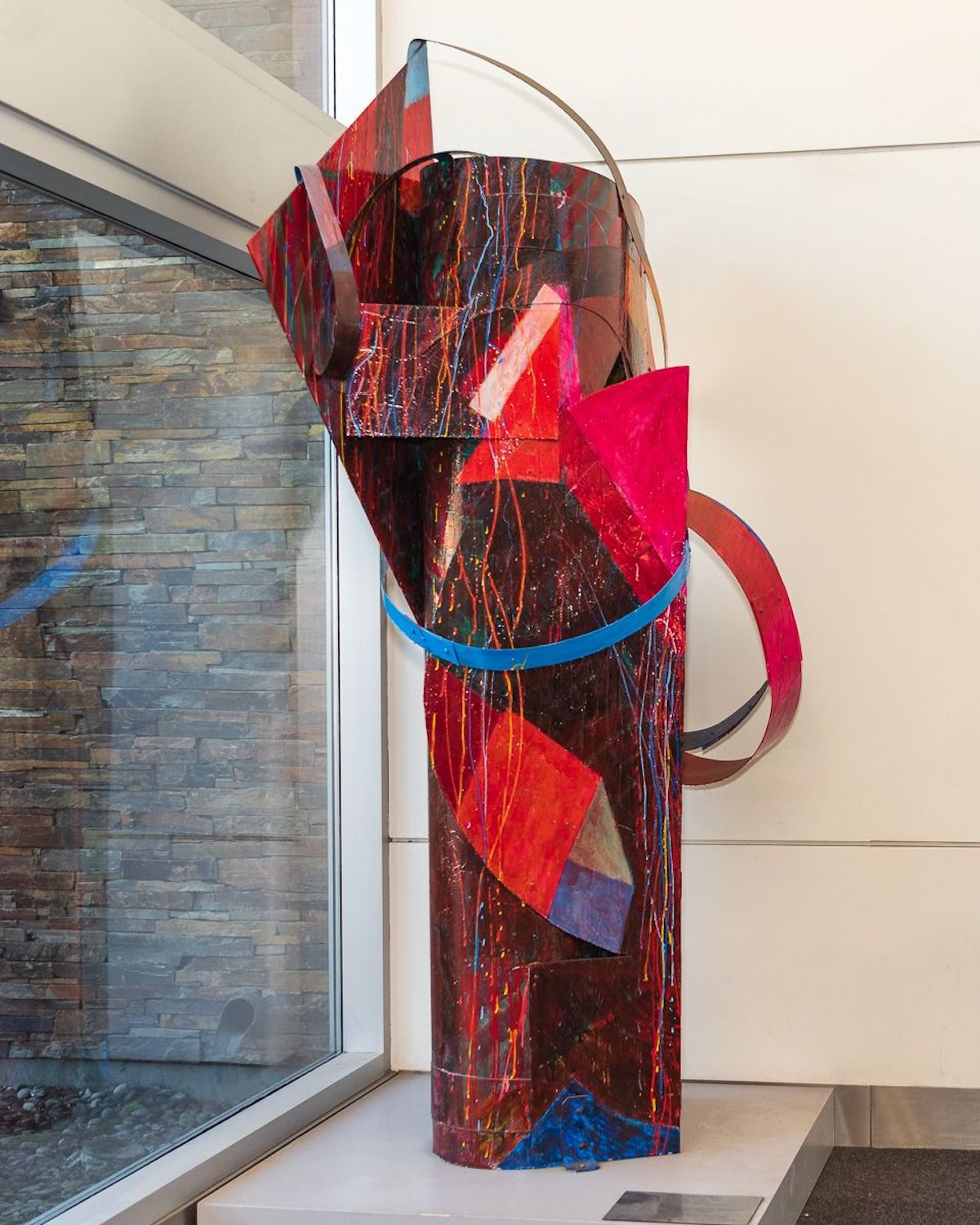
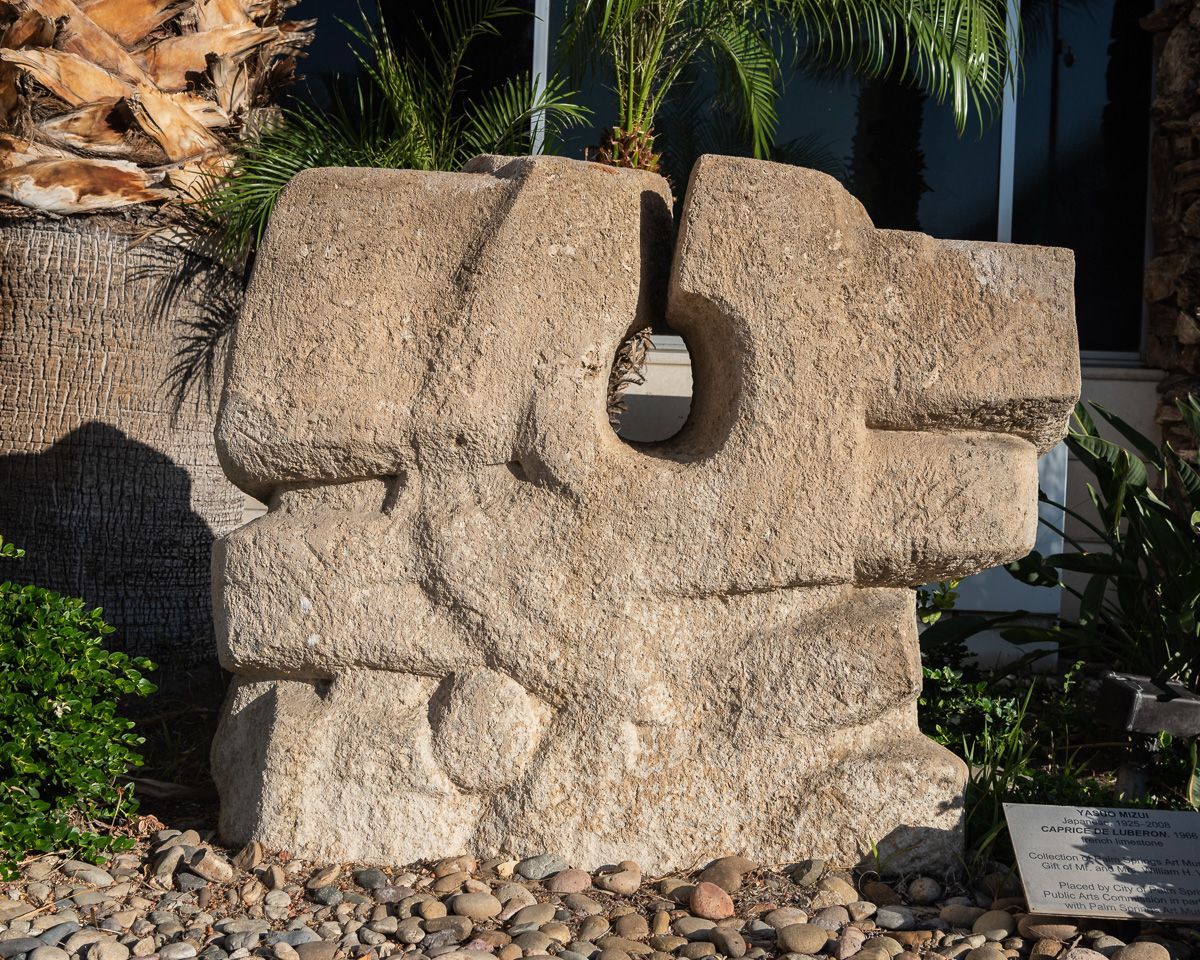
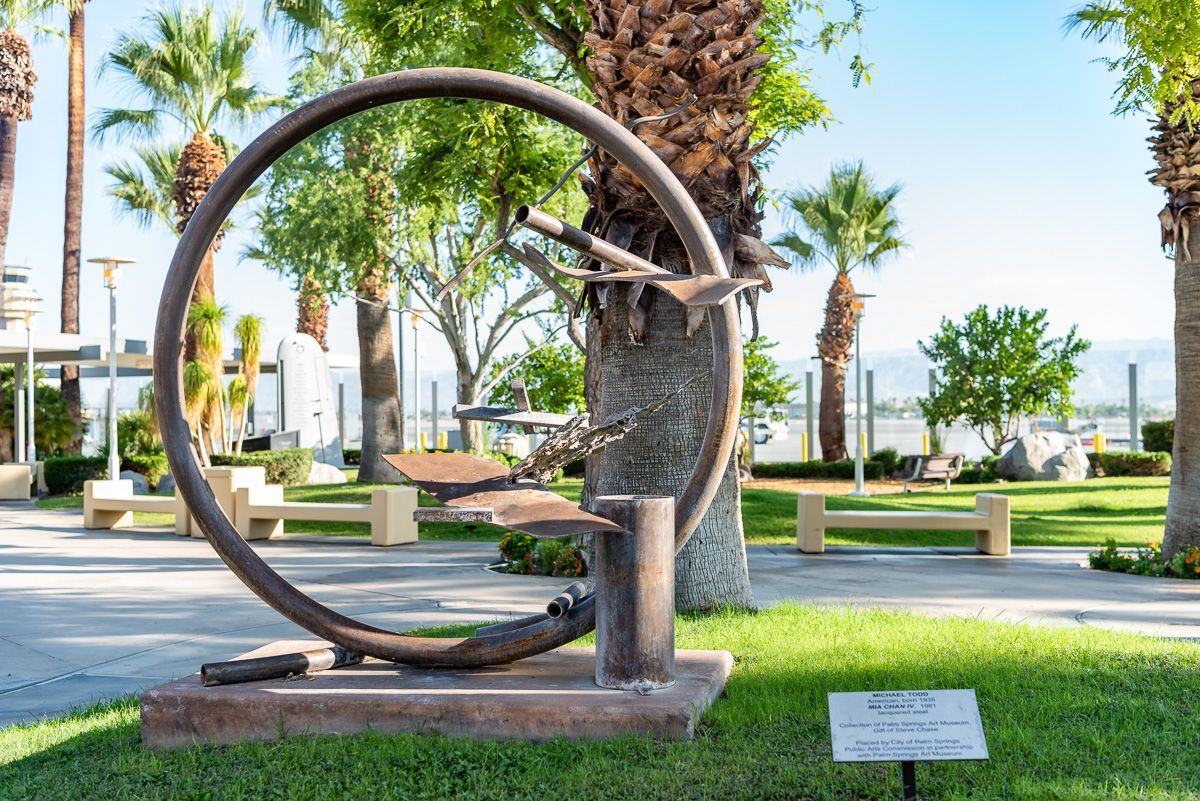
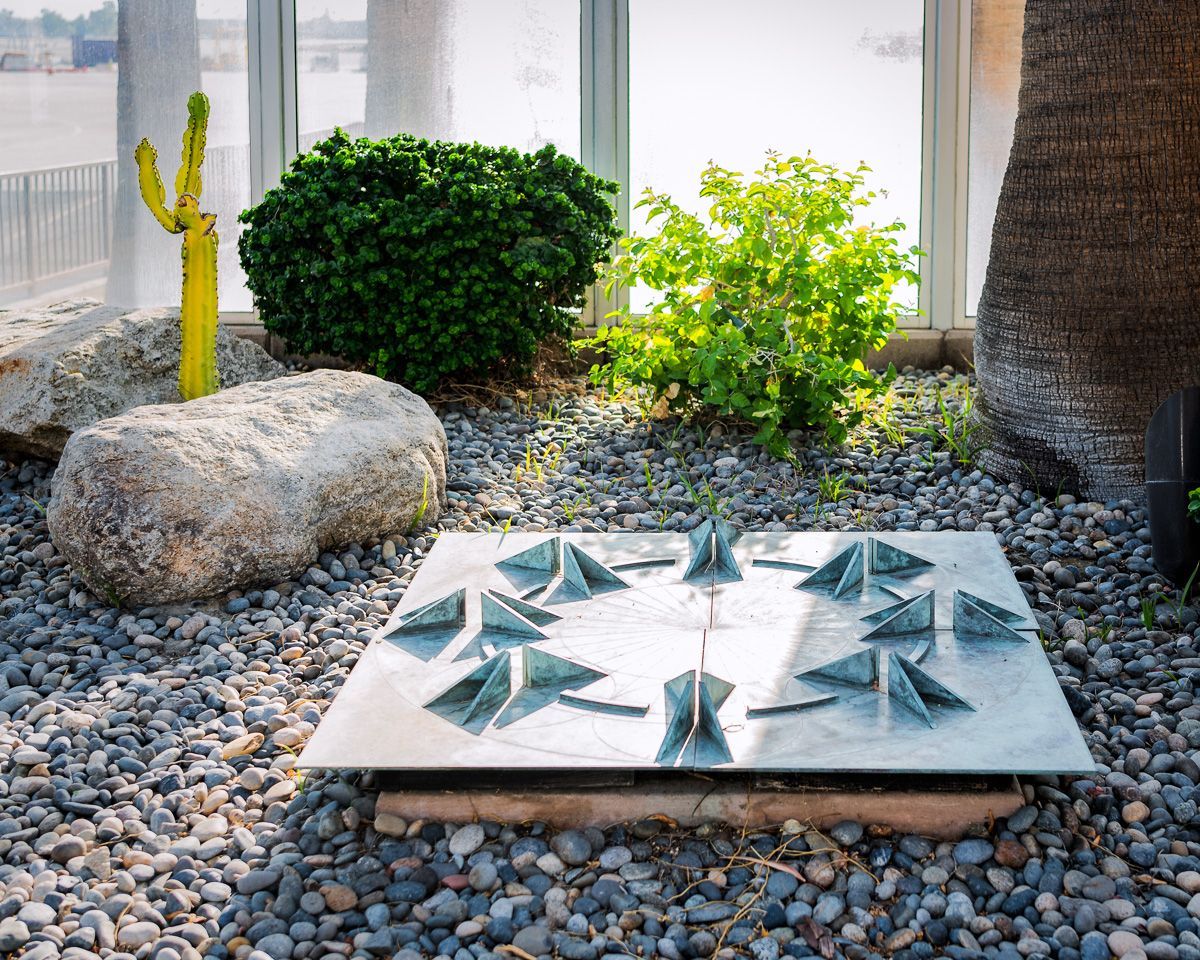
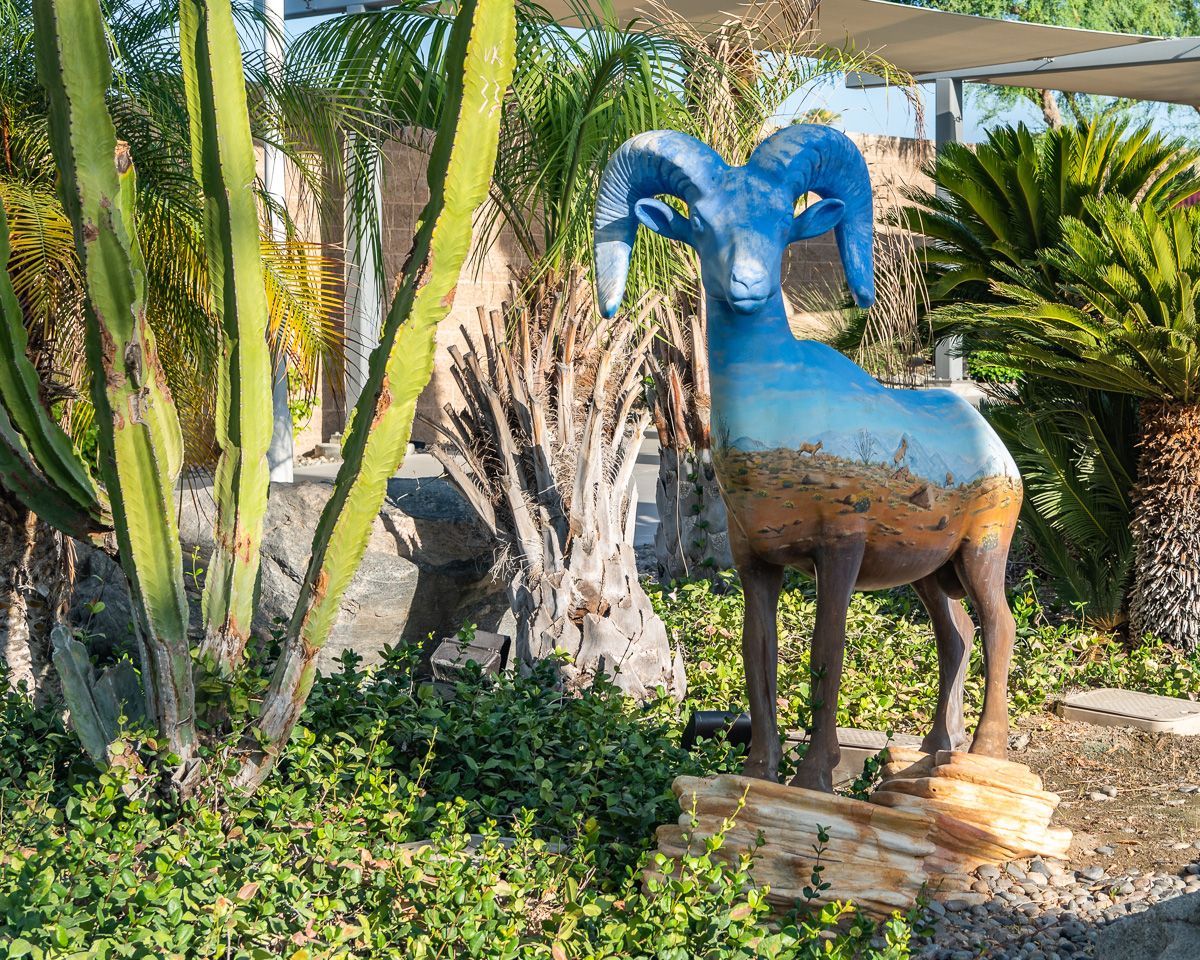

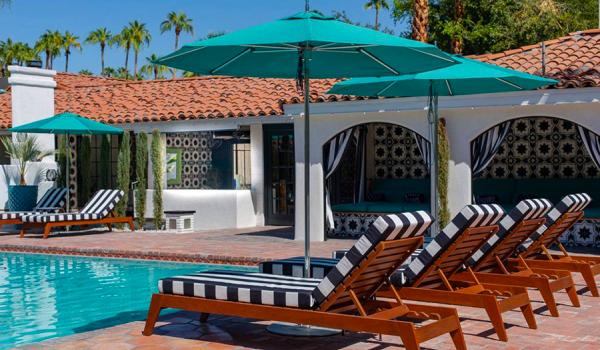
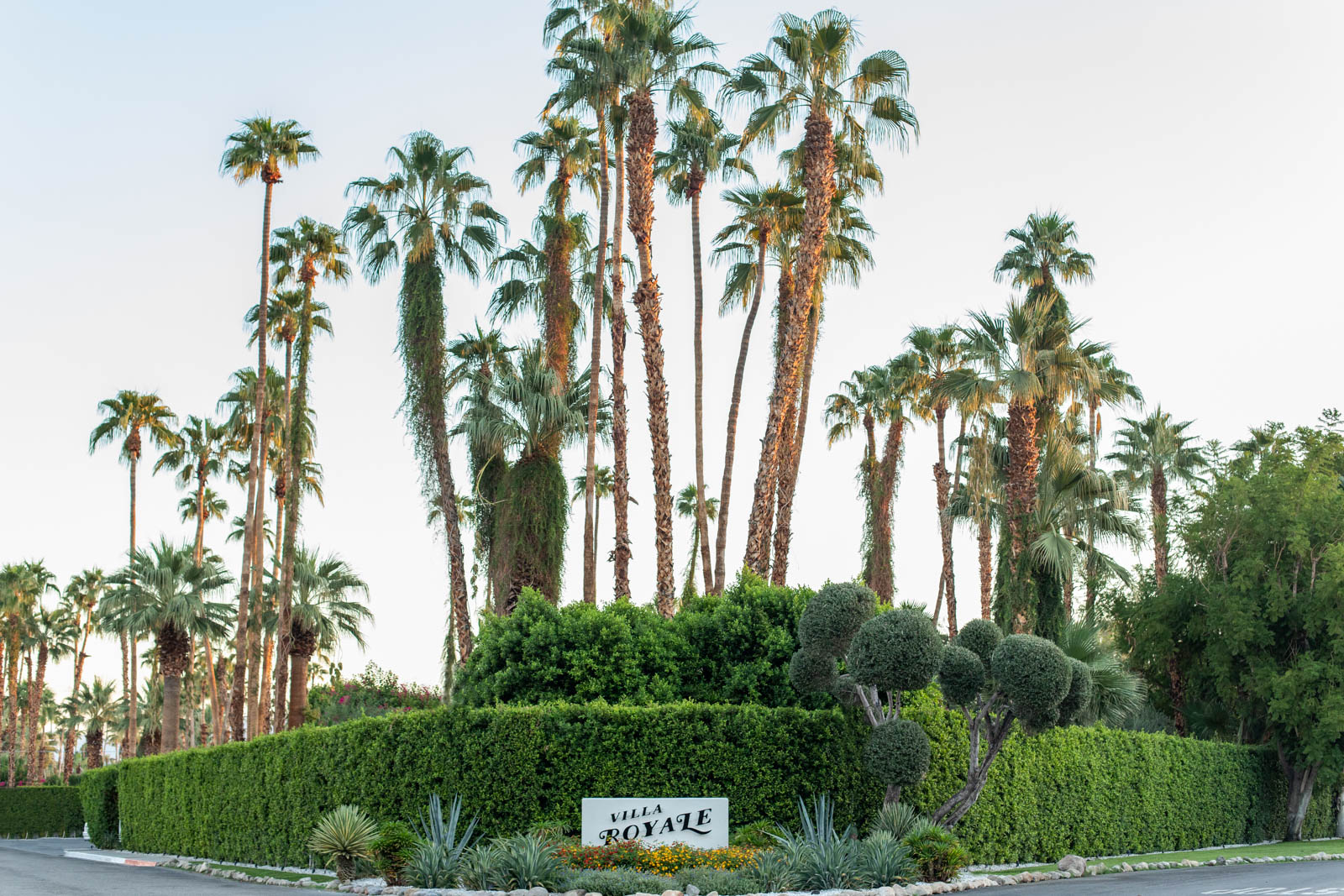
 Villa Royale was originally built in 1947 and was one of the first small hotels in south Palm Springs. It was frequented by Hollywood celebrities as a getaway that met the “two-hour rule” implemented by Hollywood studios at that time, which required that actors under studio contracts could not be farther than two hours from set.
Villa Royale was originally built in 1947 and was one of the first small hotels in south Palm Springs. It was frequented by Hollywood celebrities as a getaway that met the “two-hour rule” implemented by Hollywood studios at that time, which required that actors under studio contracts could not be farther than two hours from set.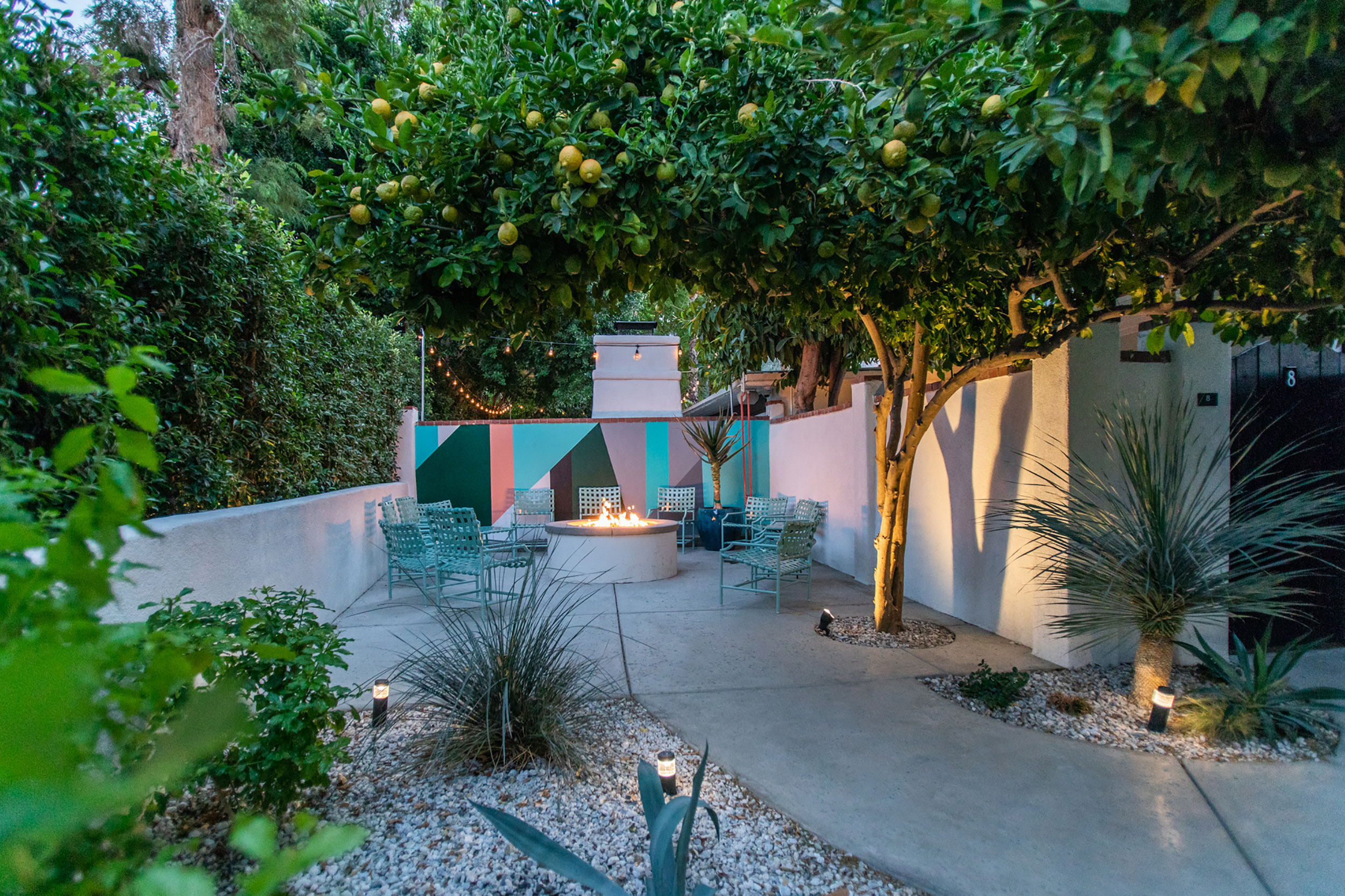 The redesigned Villa Royale retains the charm of its past roots, while adding unique contemporary design details, such as custom murals and artwork throughout the property. A large mural welcomes guests to the property, entitled “Welcome to Your Paradise,” by Sagent Staygold.
The redesigned Villa Royale retains the charm of its past roots, while adding unique contemporary design details, such as custom murals and artwork throughout the property. A large mural welcomes guests to the property, entitled “Welcome to Your Paradise,” by Sagent Staygold.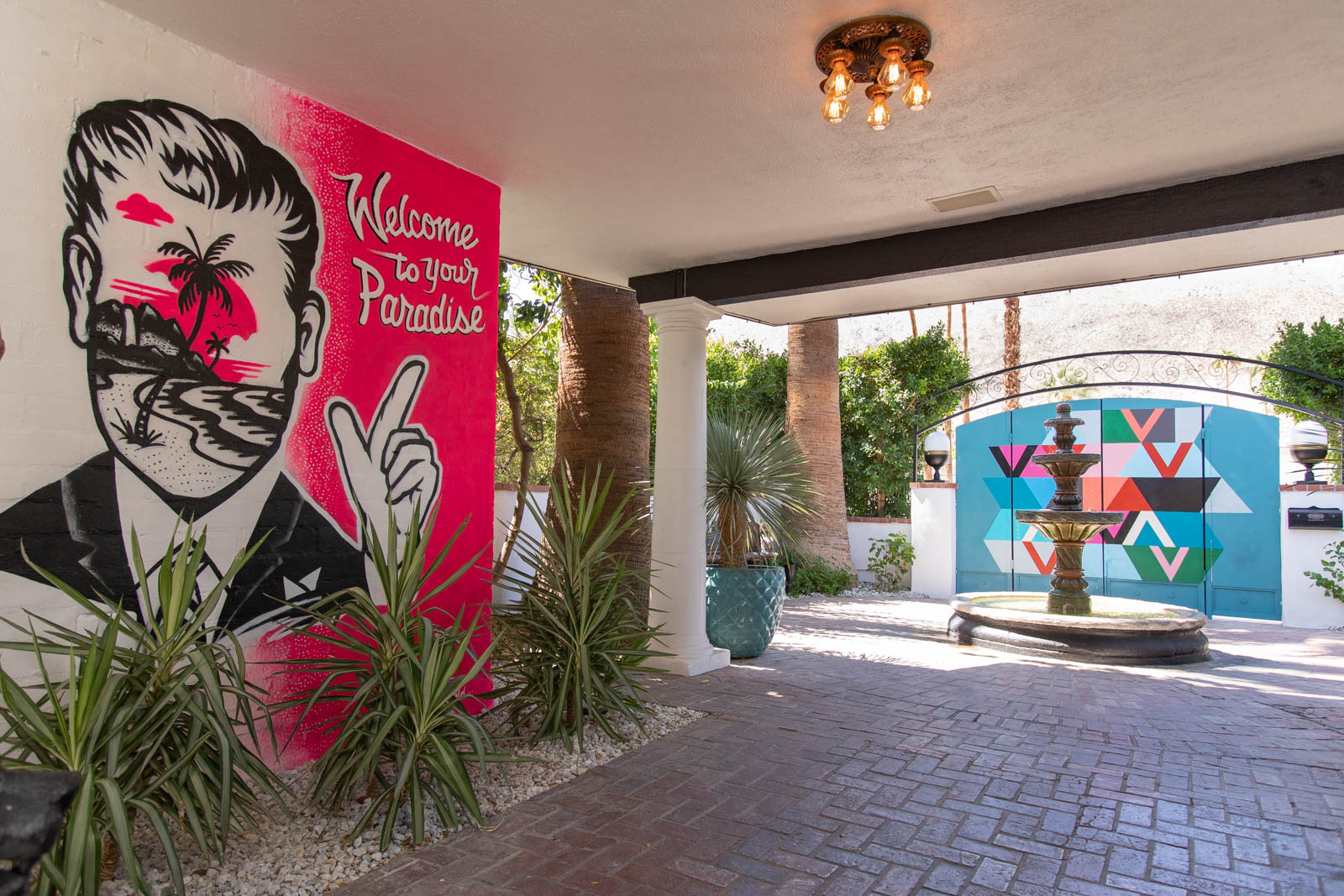
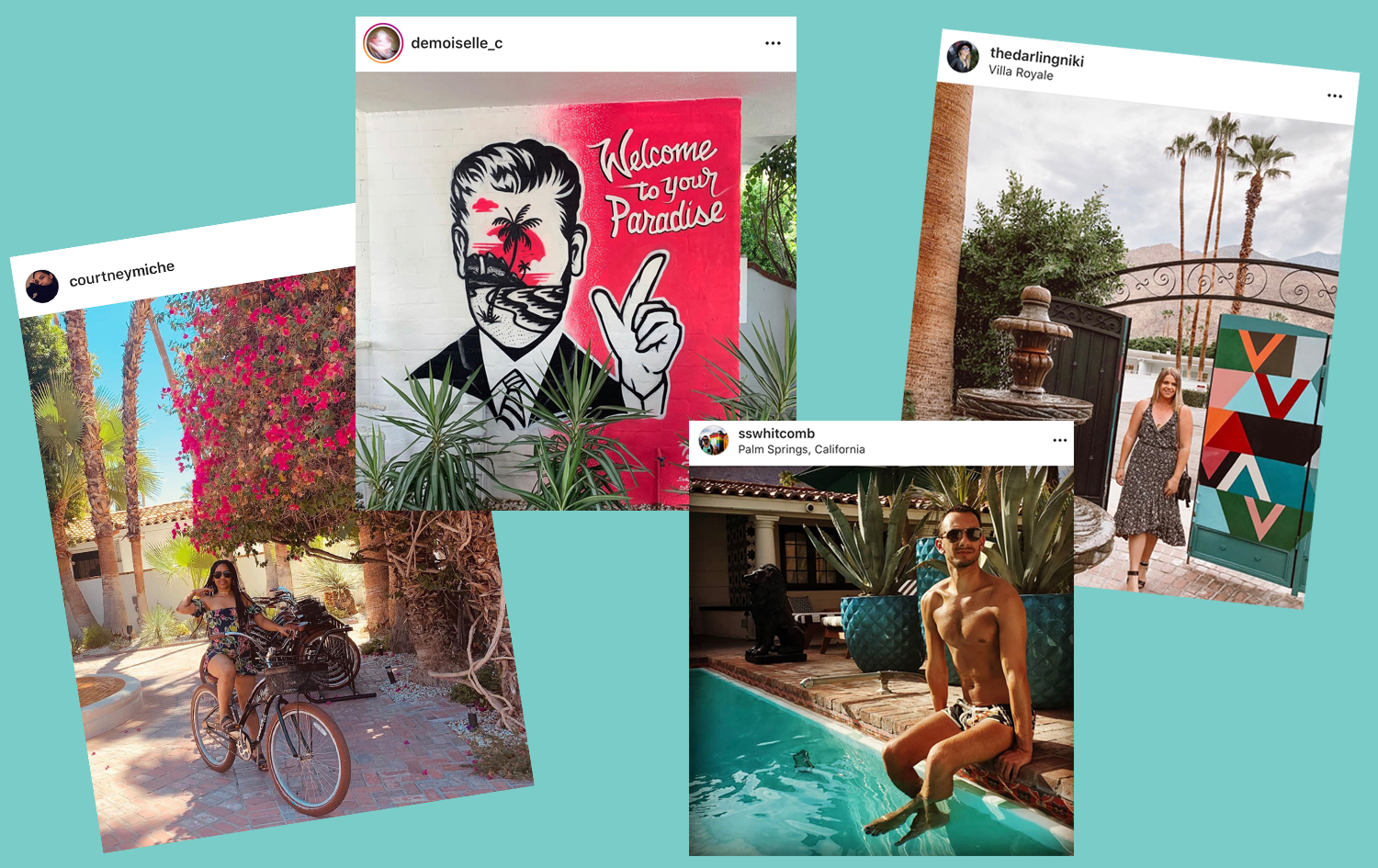 A series of geometric murals by Los Angeles-based artist Sara Radovanovitch are located around the property, as well as her travel-inspired “El Viaje” painting in the poolside lanai, and portraits of Hollywood stars in some of the guest rooms. Additional paintings by Juan Casas and Lou Kregal were painted on site at the hotel, featuring desert landscapes, classic cars and movie and music icons.
A series of geometric murals by Los Angeles-based artist Sara Radovanovitch are located around the property, as well as her travel-inspired “El Viaje” painting in the poolside lanai, and portraits of Hollywood stars in some of the guest rooms. Additional paintings by Juan Casas and Lou Kregal were painted on site at the hotel, featuring desert landscapes, classic cars and movie and music icons. Villa Royale is a pet-friendly property, so you can enjoy this beautiful hotel with your four-legged friends!
Villa Royale is a pet-friendly property, so you can enjoy this beautiful hotel with your four-legged friends! There are three pools on the property, all with gorgeous mountain views that make them the perfect spot for enjoying the scenery with a cocktail in hand. And speaking of cocktails: the team at Del Rey, the hotel’s onsite restaurant and bar, are known for their excellent drinks, as well as a delicious Mediterranean-inspired tapas menu.
There are three pools on the property, all with gorgeous mountain views that make them the perfect spot for enjoying the scenery with a cocktail in hand. And speaking of cocktails: the team at Del Rey, the hotel’s onsite restaurant and bar, are known for their excellent drinks, as well as a delicious Mediterranean-inspired tapas menu.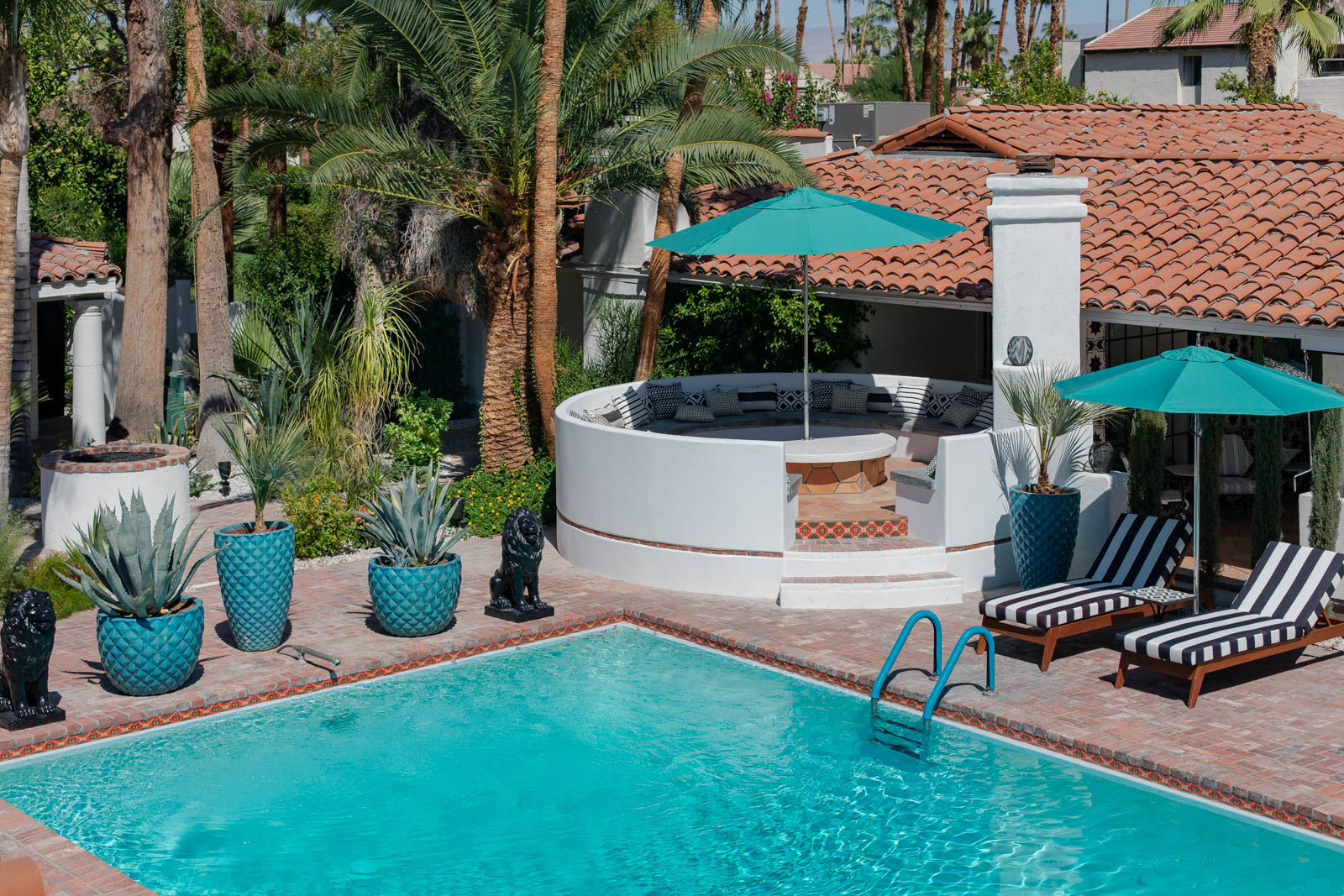
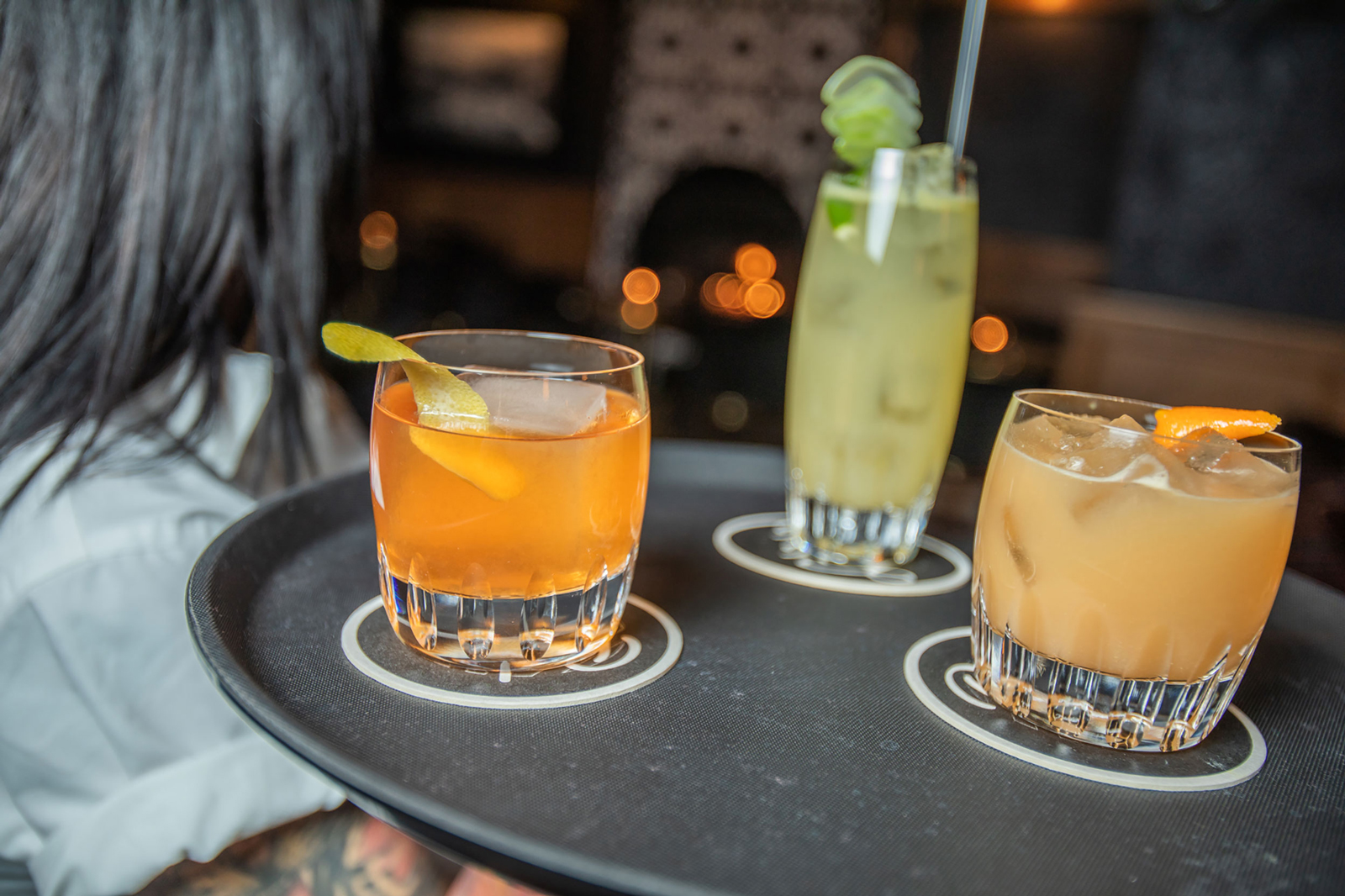 Other Instagram-able details we love include the intricately patterned tiles around the property, the bikes available for guest use during your stay, and the vintage 1960 Oldsmobile 88 parked out front by the hotel’s entrance.
Other Instagram-able details we love include the intricately patterned tiles around the property, the bikes available for guest use during your stay, and the vintage 1960 Oldsmobile 88 parked out front by the hotel’s entrance.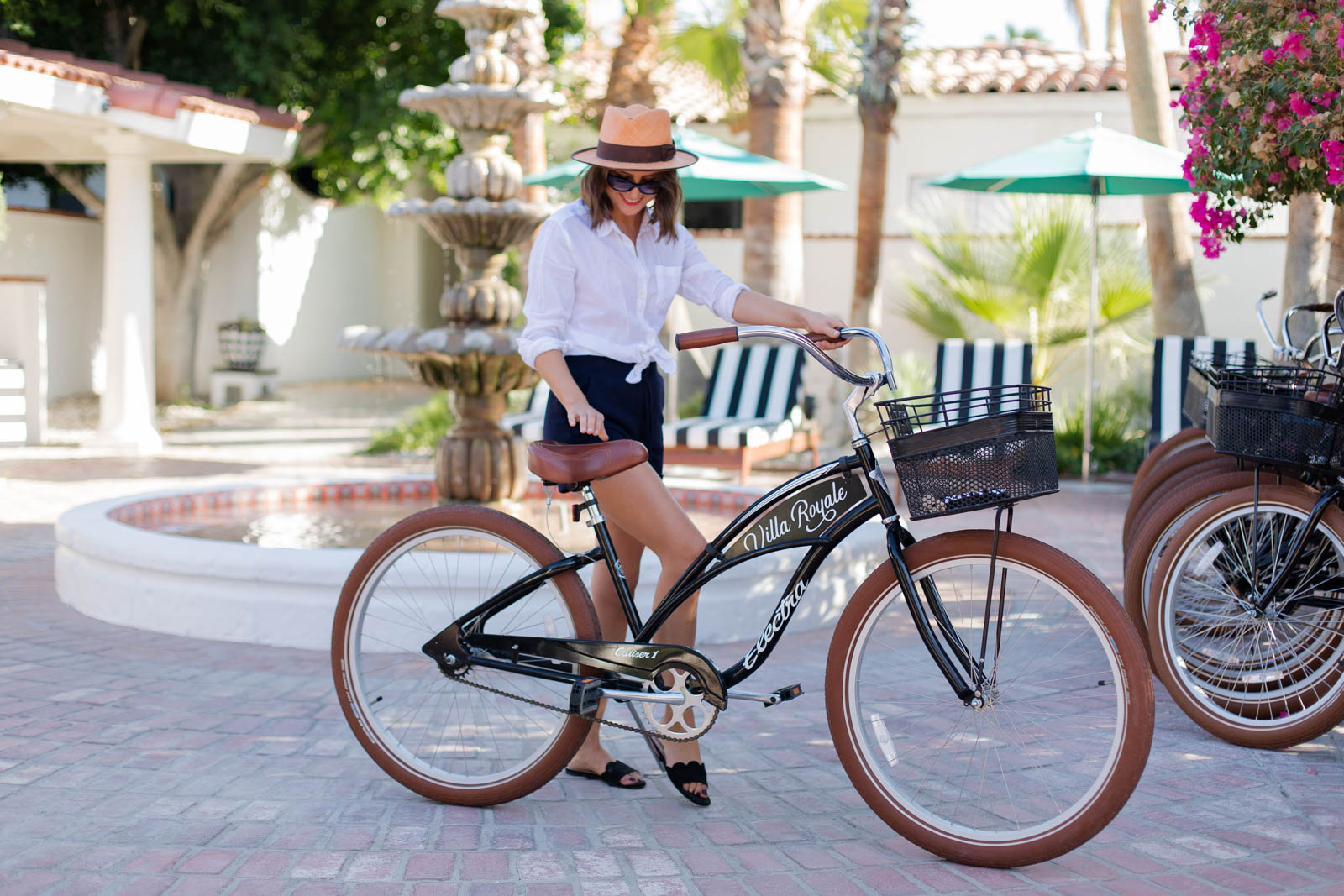
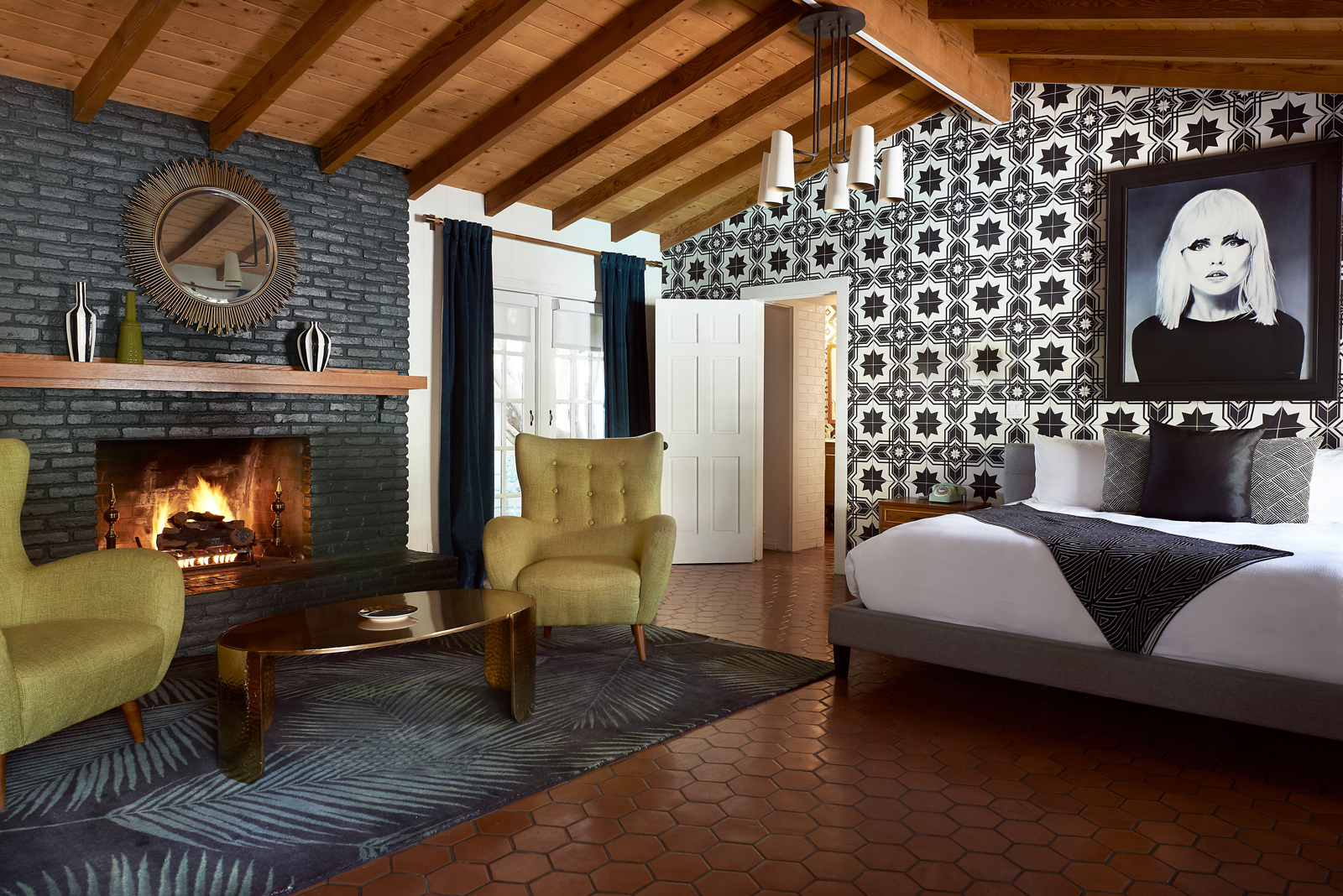
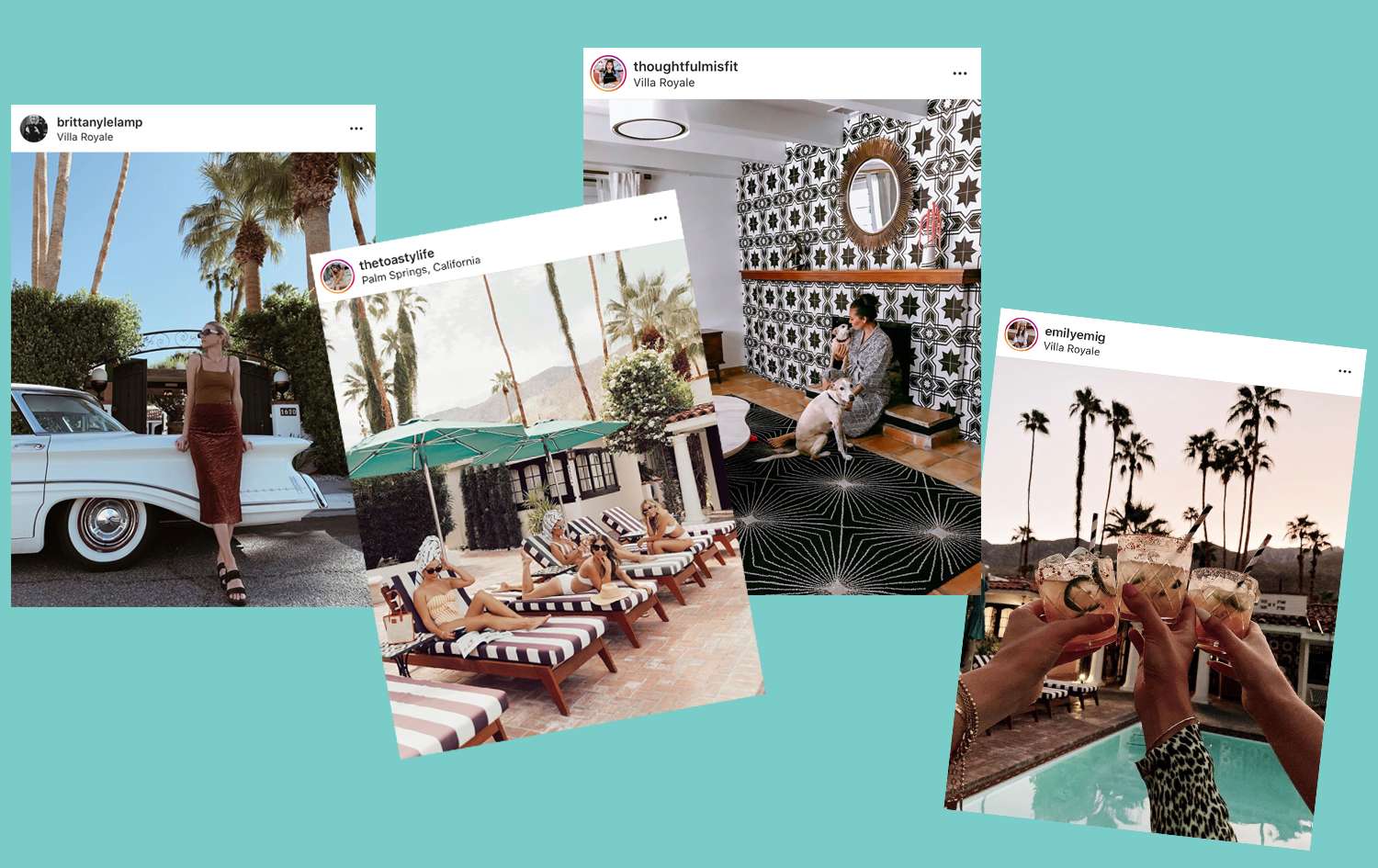 Stay tuned as we continue to explore other great Instagram-friendly small hotels in Palm Springs in this series of blog posts coming out each month!
Stay tuned as we continue to explore other great Instagram-friendly small hotels in Palm Springs in this series of blog posts coming out each month!